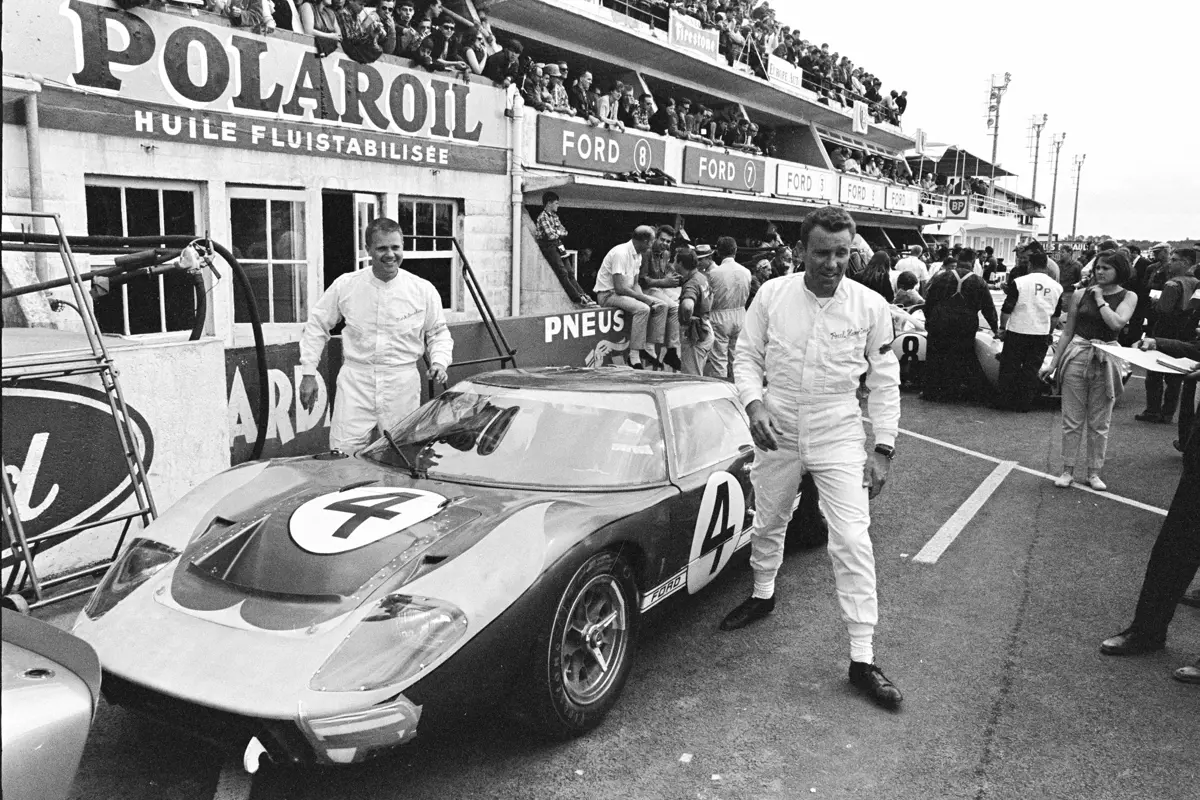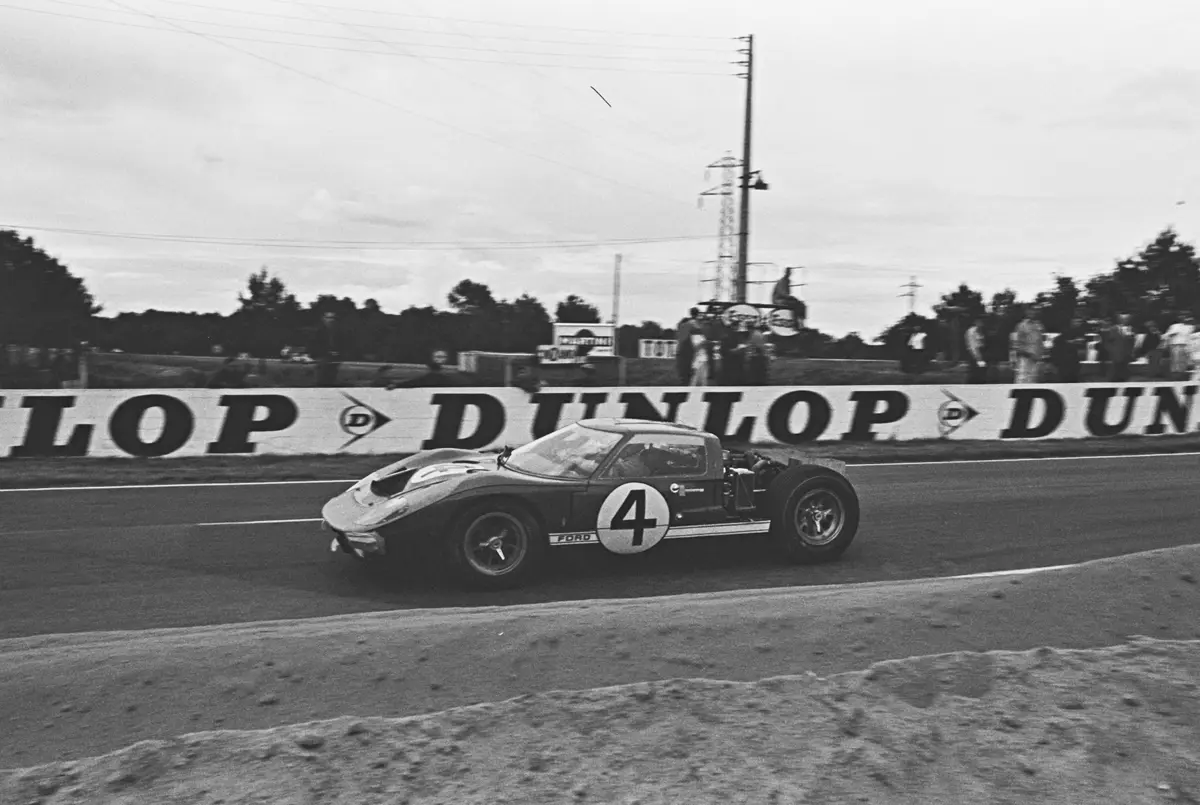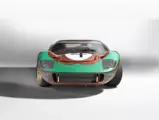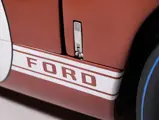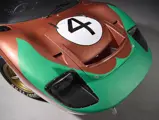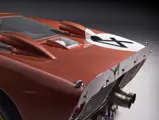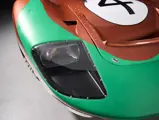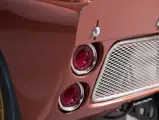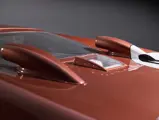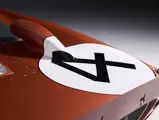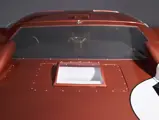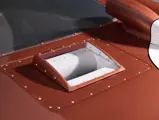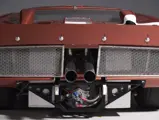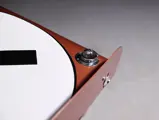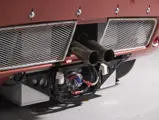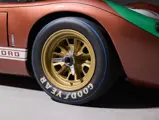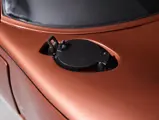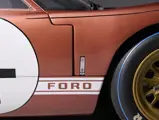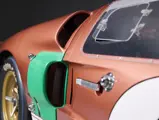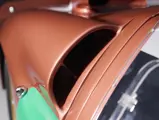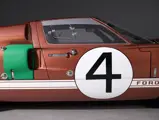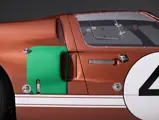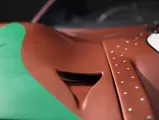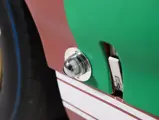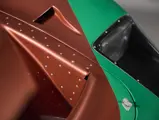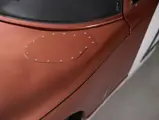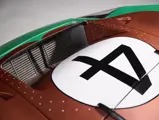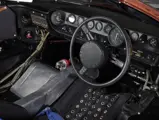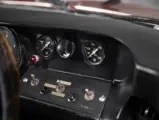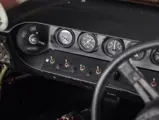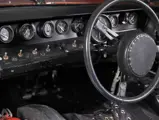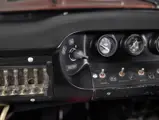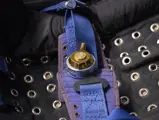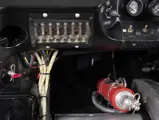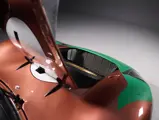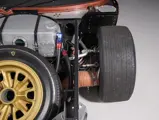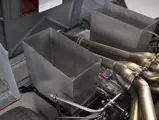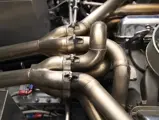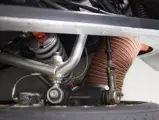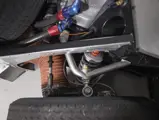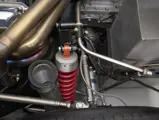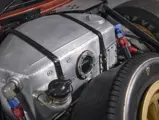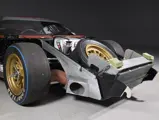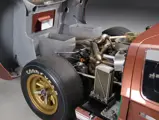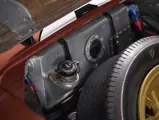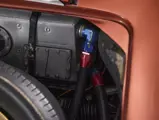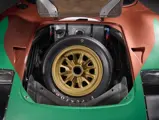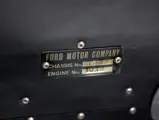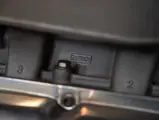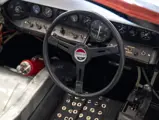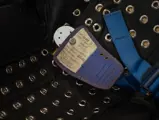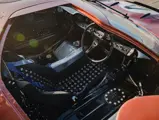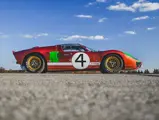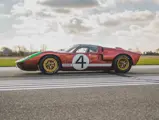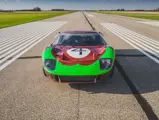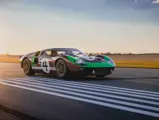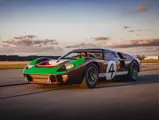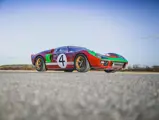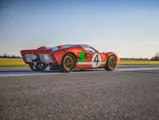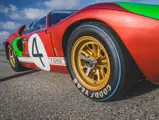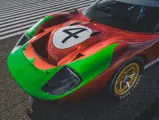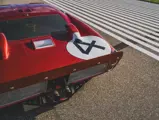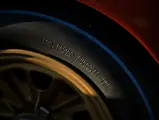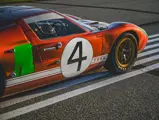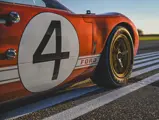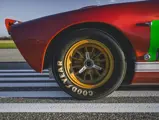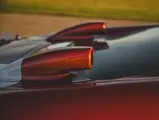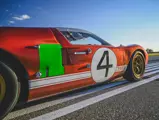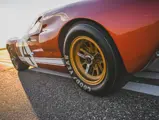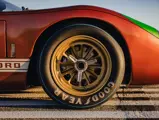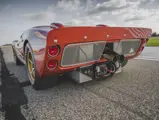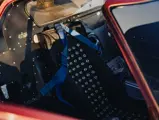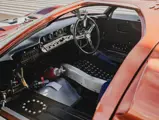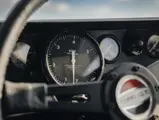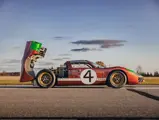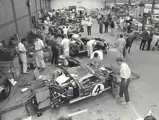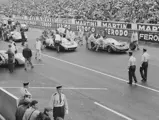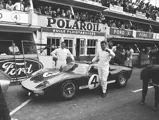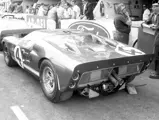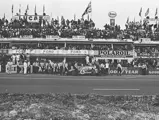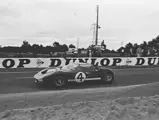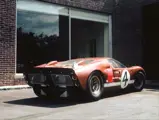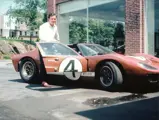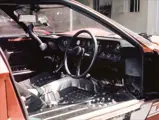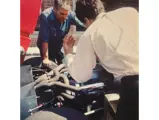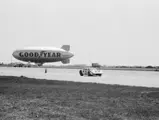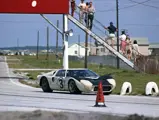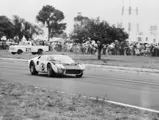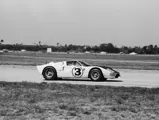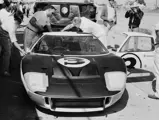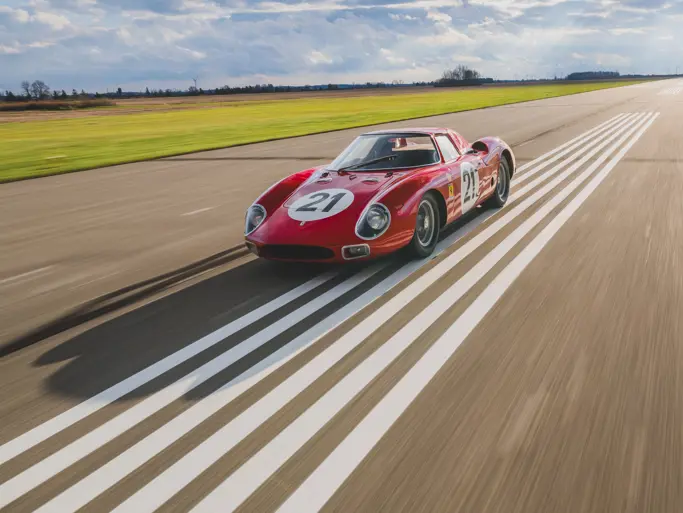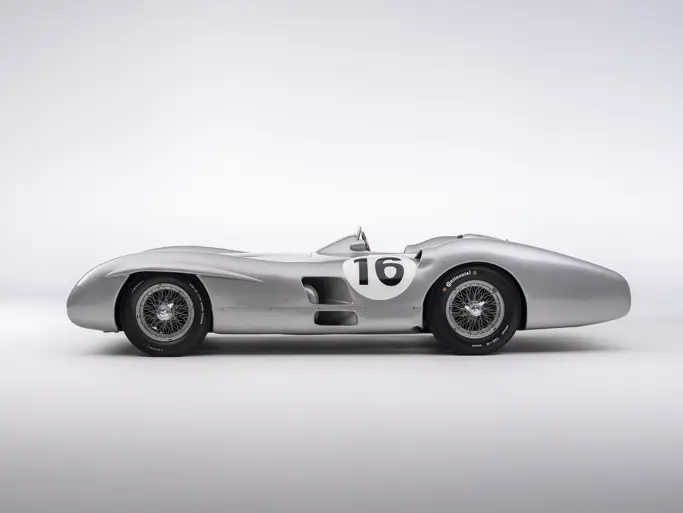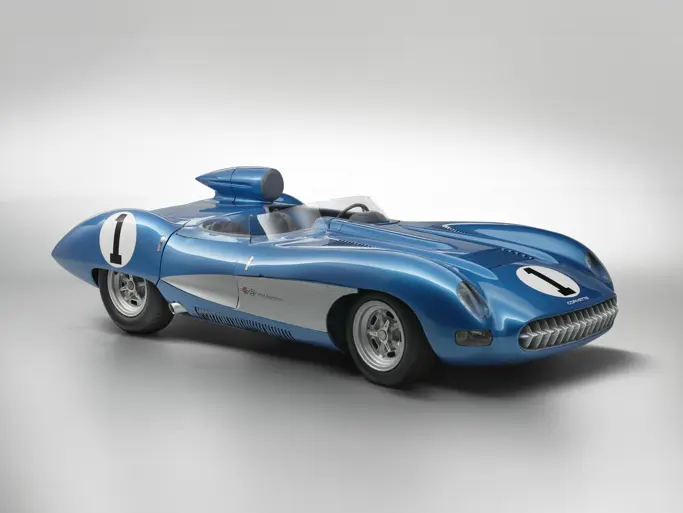At some point following its European tour, P/1032 was refinished to black with white stripes, similar to the 1966 Le Mans-winning #2 McLaren and Amon car (P/1046). Although unconfirmed, it is believed that this cosmetic refinish was carried out for promotional purposes. Interestingly, the livery of the #2 car was not reproduced with total accuracy; chassis P/1046 raced at Le Mans in black with silver stripes, not white stripes. Additionally, the roundels on P/1032 were outlined in red, unlike the purely white roundels on P/1046.
P/1032 was eventually donated to Anton "Tony" Hulman Jr., then the owner of the Indianapolis Motor Speedway, for display at the Indianapolis Motor Speedway (IMS) Museum. It joined the display on 29 March 1968. At the time of donation, P/1032 was still black with white stripes, and the car was equipped with a non-running, wet-sump NASCAR 427-cubic-inch V-8 with a T-44 transaxle. With oil lines for the engine disconnected, a non-running engine, no clutch, and the car’s fuel bags removed, P/1032’s “setup” was good only for one thing: static display.
From 1976 to 1983, P/1032 was displayed at the Early Wheels Museum, an arm of the IMS Museum with a small display of non-Indianapolis 500-related cars in Terre Haute, Indiana, where Tony Hulman Jr. was originally from and where his family businesses were based. P/1032 was featured in the 1982 issue #39 of The Shelby American and later in a 1985 calendar Ford Racing: A Retrospect by Paul Oxman publishing.
In the mid-2000s, discussions began to restore P/1032 to its correct #4 Holman-Moody 1966 Le Mans livery, and restoration work began in October 2006. It is significant here to note that this restoration work was undertaken by four employees of the Ford Motor Company. Jim Dunham, a senior engineer, took the lead, joined by engineers Paul Osborne and Adam Christian. Mose Nowland—who, in his 57-year career at Ford developing engines, was part of the Le Mans program in the 1960s—rounded out the team. All four graciously donated their time to restore P/1032, only asking for reimbursement for materials required to complete the restoration.
While the initial scope of the project was an exterior refinish, the job expanded to a full restoration, which was completed in 2011. Following completion, P/1032 was proudly displayed at the 2011 Concours d'Elegance of America, held at The Inn at St. John's in Plymouth, Michigan, not far from where the restoration was carried out.
Since then, P/1032 has resided in the IMS Museum's illustrious Vault, where it was shown on VIP tours for guests who wanted to see the full extent of the impressive collection. There, P/1032 was displayed alongside the 1965 Le Mans-winning NART Ferrari 250 LM and the Mercedes-Benz W 196 R Streamliner driven by Juan Manuel Fangio and Stirling Moss. It has been periodically displayed on the IMS Museum’s main floor, most recently in the 2020–2021 “From the Vault” exhibition. Further, INDYCAR driver Conor Daly drove the car in demonstration laps during the 2023 IMS and IMSA’s Battle on the Bricks weekend.
Today, P/1032 remains in its 1966 #4 Le Mans livery, still beaming from its 2011 restoration and in running order. A “no-stories example” with known ownership from new, P/1032 has the distinction of two of the world’s premier races, Sebring and Le Mans, on its record. In part because it only raced twice, P/1032 suffered no on-track crashes, and it did not receive the ongoing upgrades that similar cars with more extensive racing records did. Because of this, P/1032 is believed to be one of the best examples of a Mark II in existence—a stellar representation of the GT40 as it was at the beginning of Ford’s endurance-racing dominance.
THE OPPORTUNITY OF A LIFETIME
Ford celebrated its centennial with a special car, the GT40-inspired Ford GT—a stunning homage to the Le Mans-winning cars of the 1960s, and Detroit’s first supercar. Ten years later, the second-generation Ford GT would return to Le Mans achieving class victory in 2016 for Ford, fittingly on the 50th anniversary of their first win in 1966. Between Ford’s celebration of its heritage with retro-inspired models, a victorious return to Le Mans in 2016, and the release of the Academy Award winning-movie Ford v Ferrari in 2019, Ford’s legendary 1960s GT40 program has captured the hearts of the next generation of automotive enthusiasts, ensuring that the original GT40s will remain a celebrated racecar for generations.
Yet chances to own genuine, competition-driven GT40s come along very rarely, with most of these chassis sequestered in museums—as has been the case with this car for over five decades—or closely held in corporate or private collections.
Ford’s Total Performance era set the tone for Blue Oval products for years to come, and no car is more emblematic of the effort than the mighty GT40. P/1032 was not only part of this illustrious story: it was prepped by the legendary team at Holman-Moody; it performed on two of motor racing biggest stages, Le Mans and Sebring; it was piloted by notable drivers of the period, including Walt Hansgen, Mark Donohue, and Paul Hawkins; and it was driven in testing by the legendary Ken Miles as well as “Dick” Hutcherson, who would go on to place 2nd and 3rd, respectively at Le Mans in 1966.
Benefitting from a wonderful restoration to its 1966 Le Mans configuration, chassis P/1032, one of just eight Mk IIs built, represents an excellent opportunity to acquire a piece of Ford’s legendary GT40 program—one that is, as Holman-Moody’s slogan so aptly put it, Competition Proven.

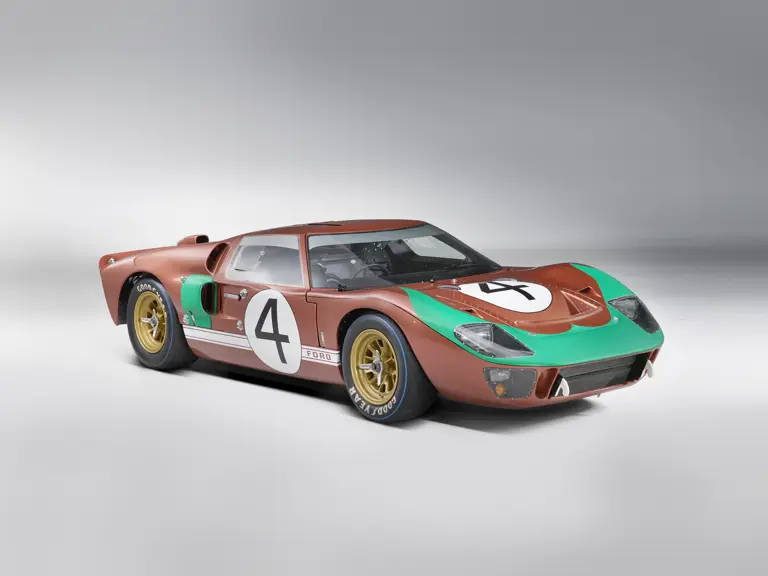
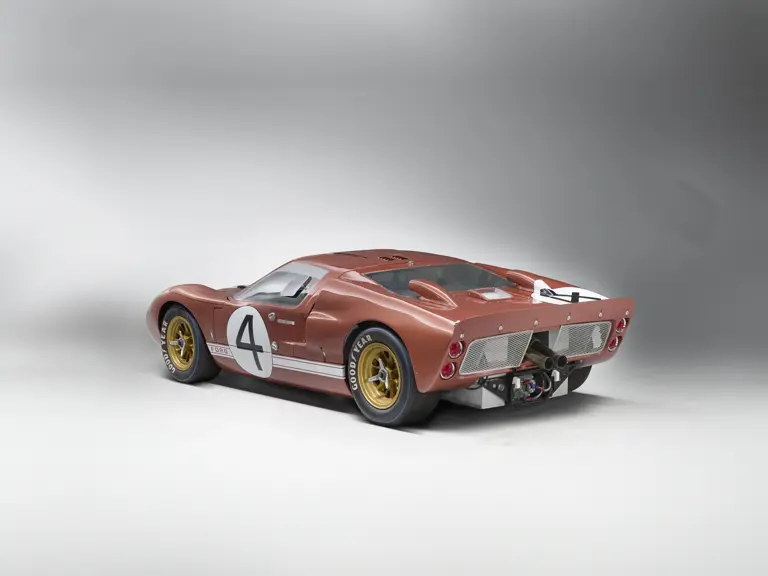
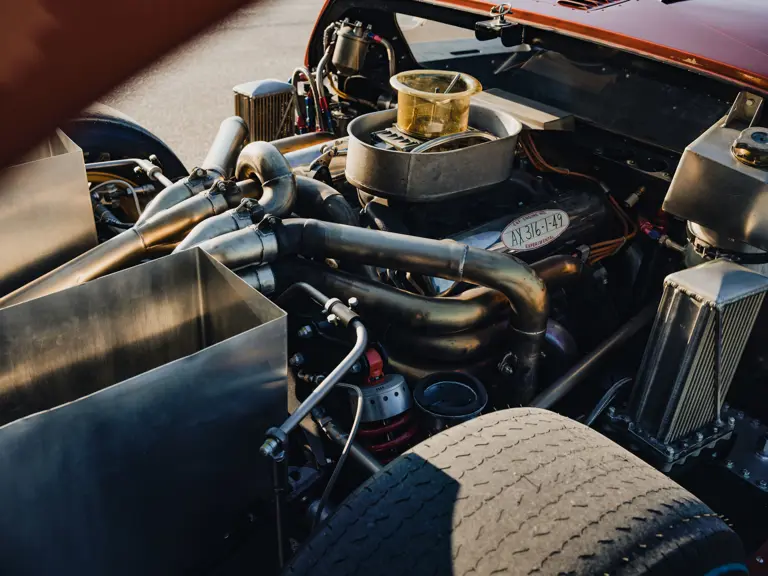
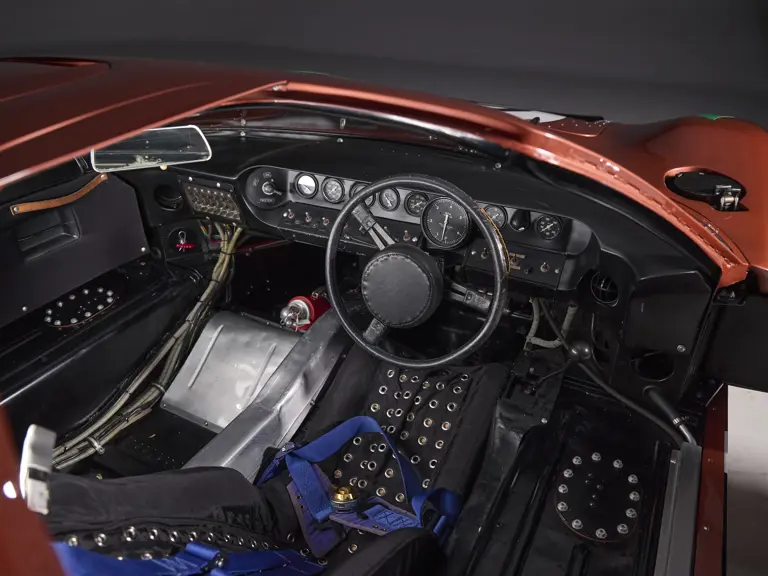
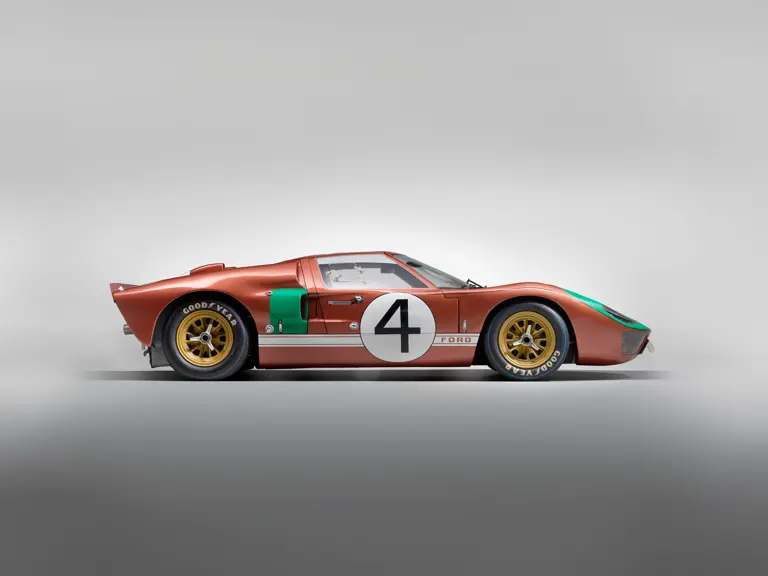
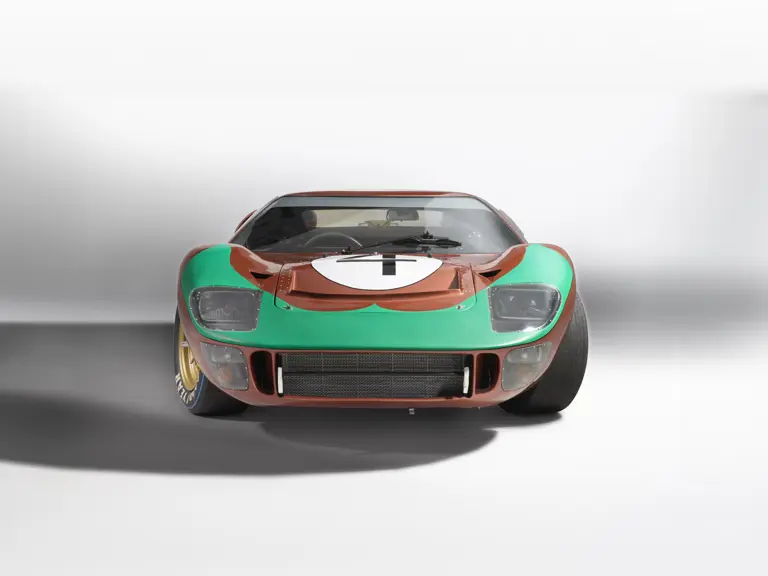
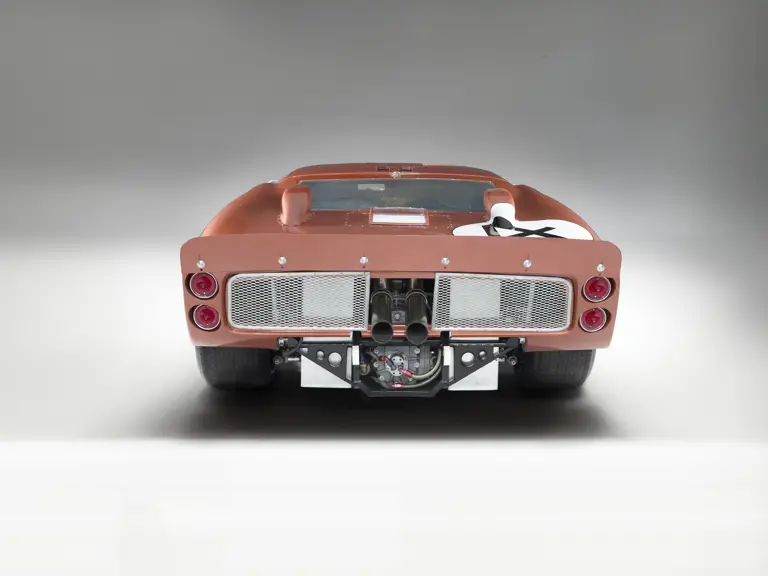
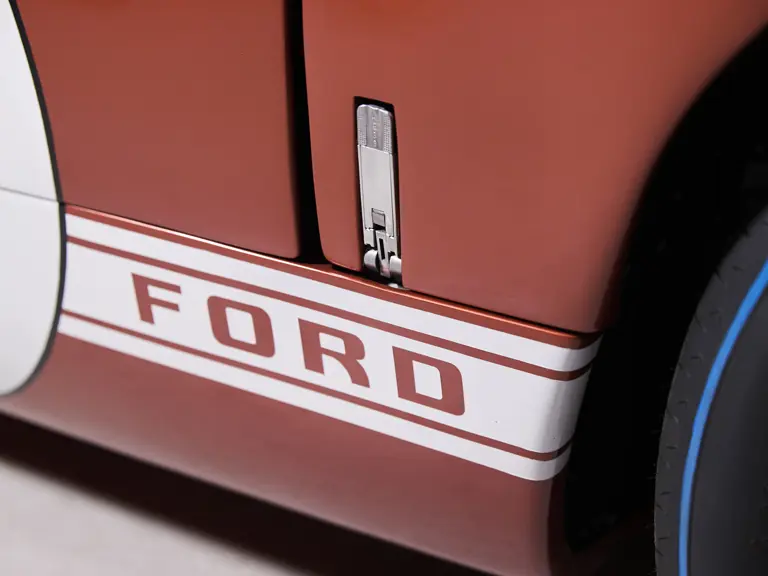
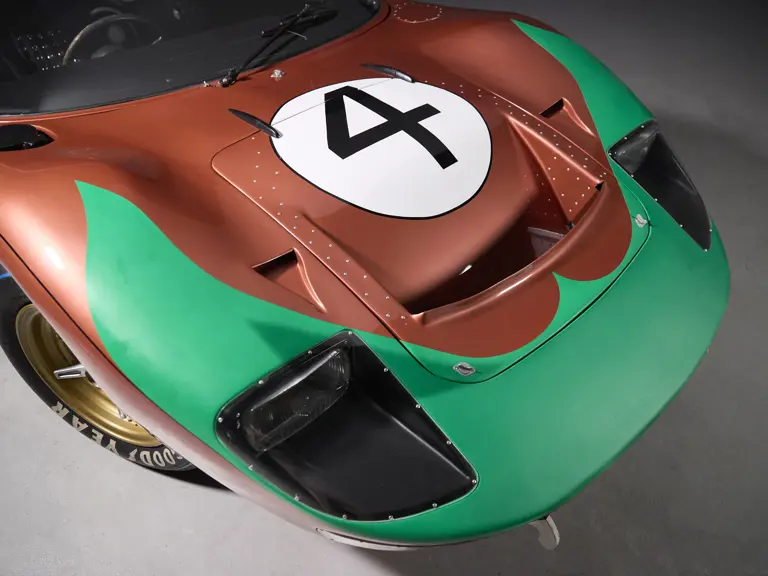
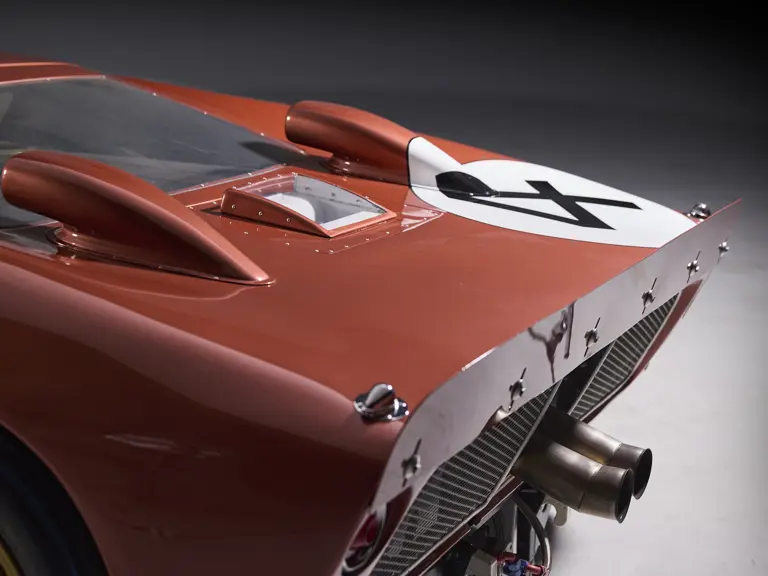
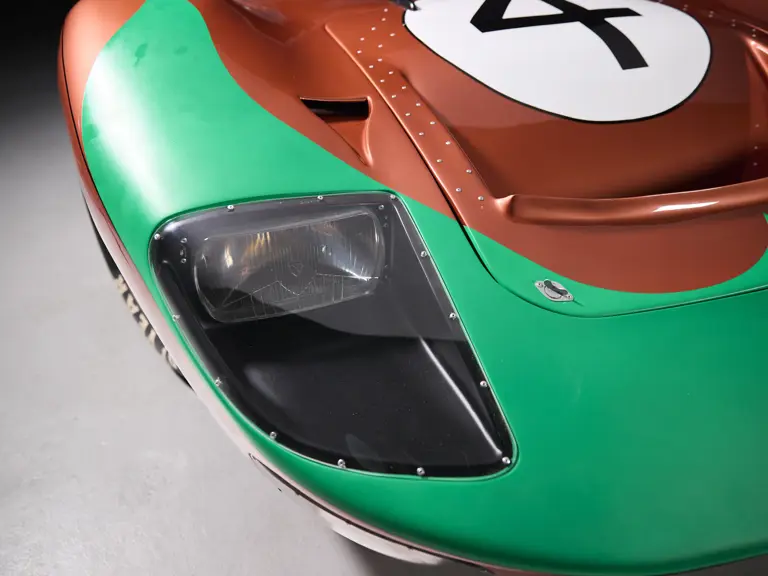

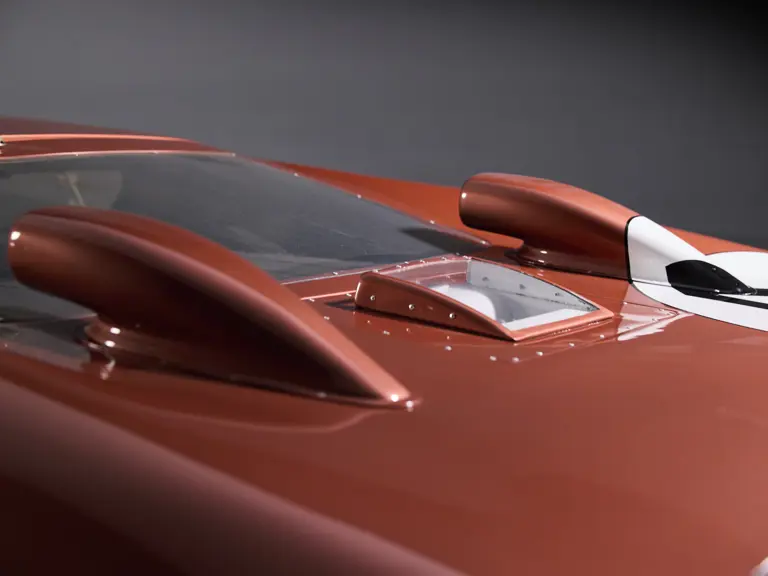
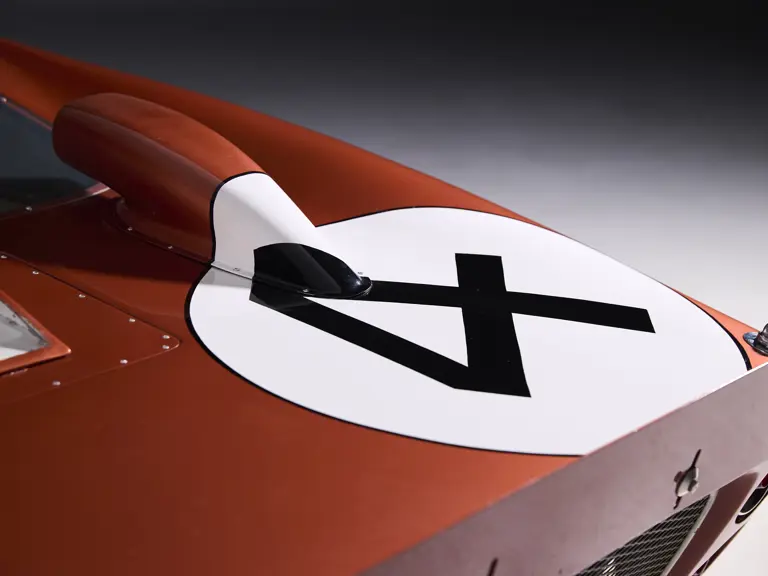

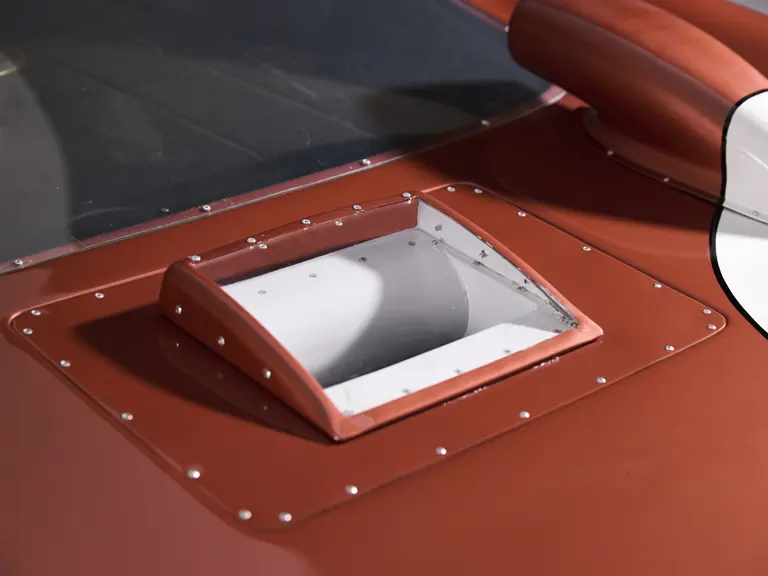
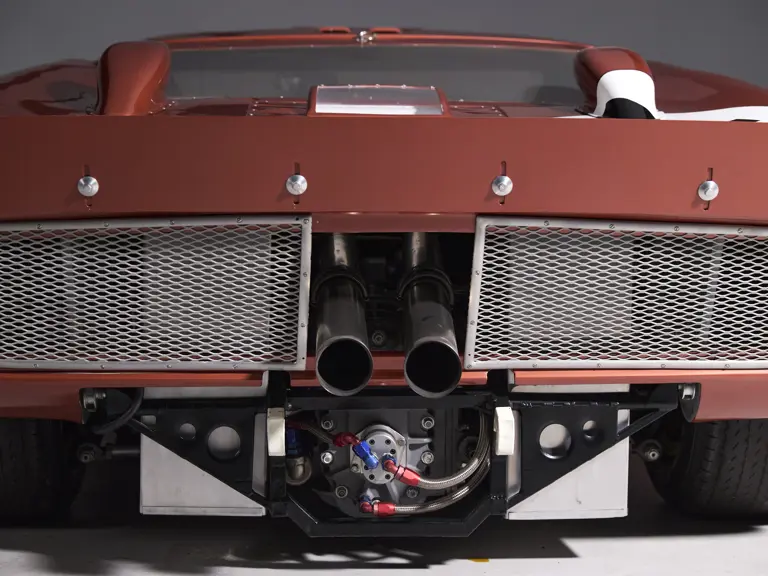
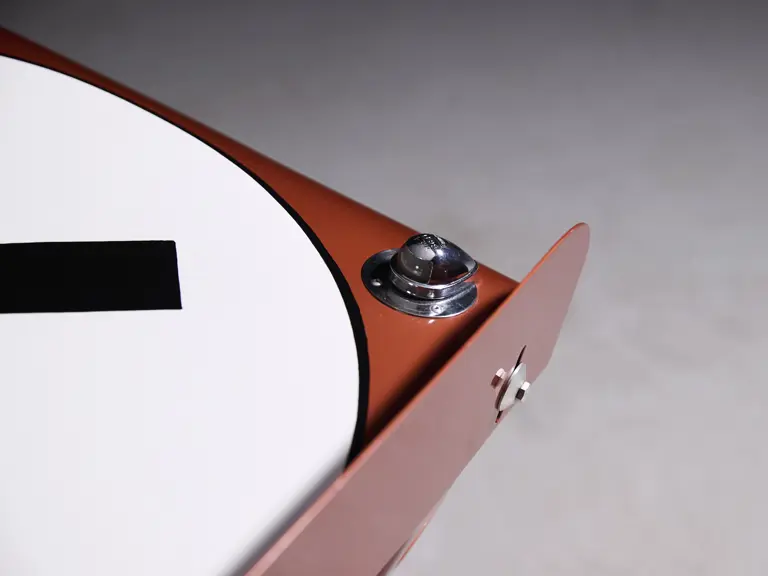
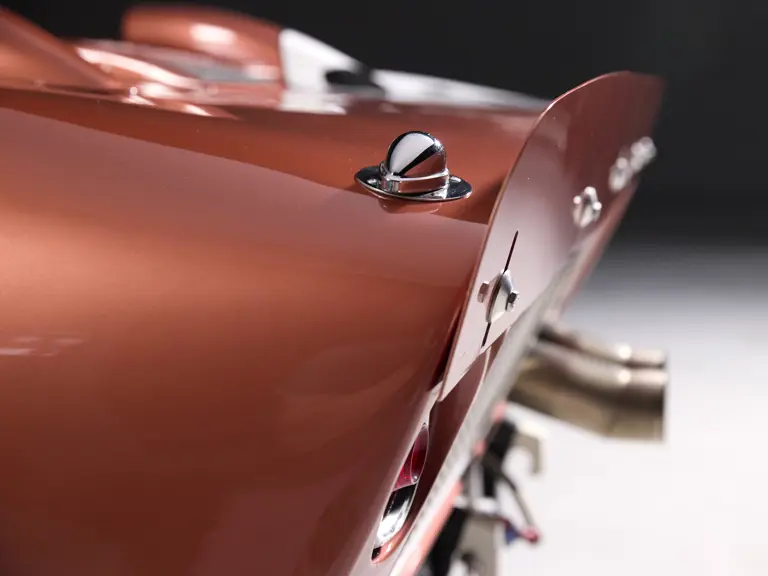
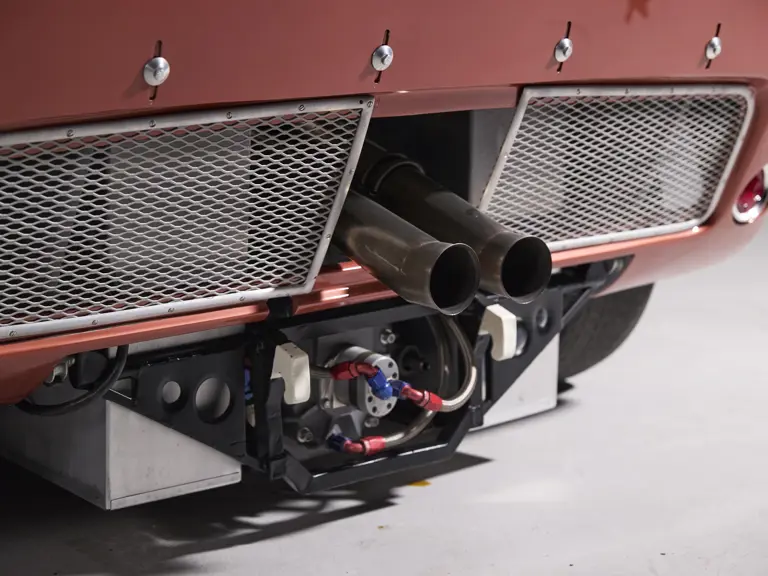
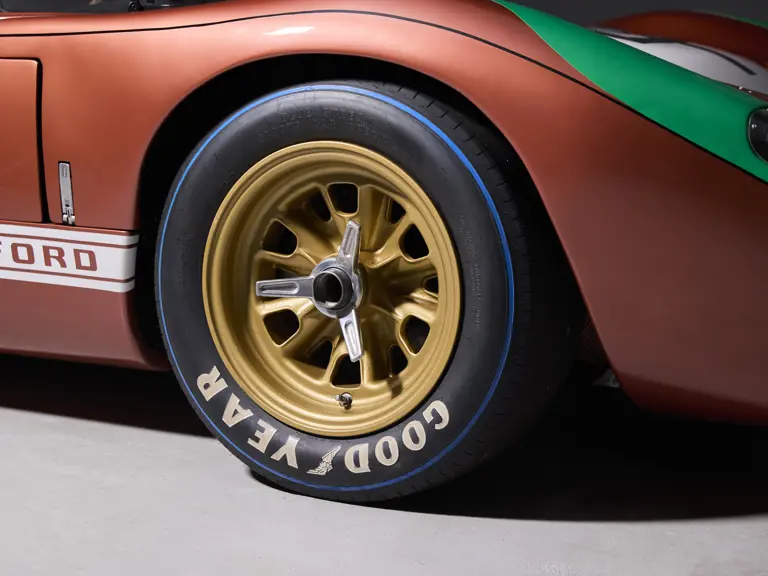

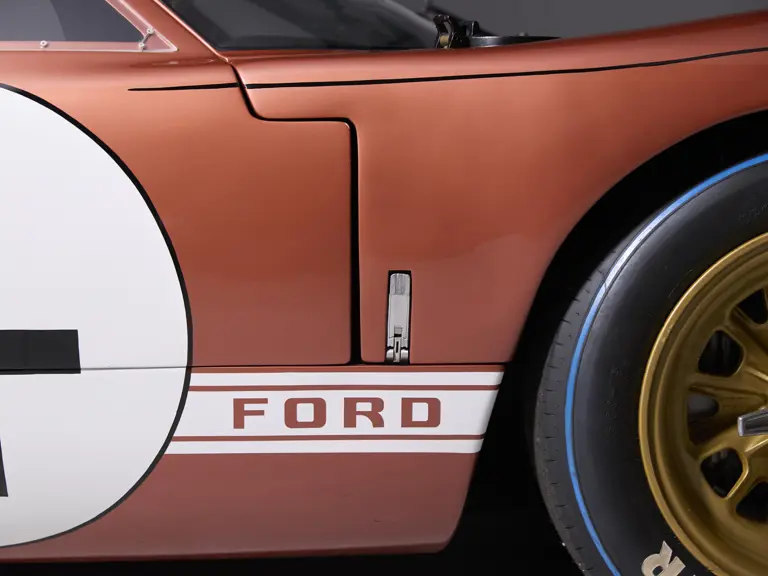
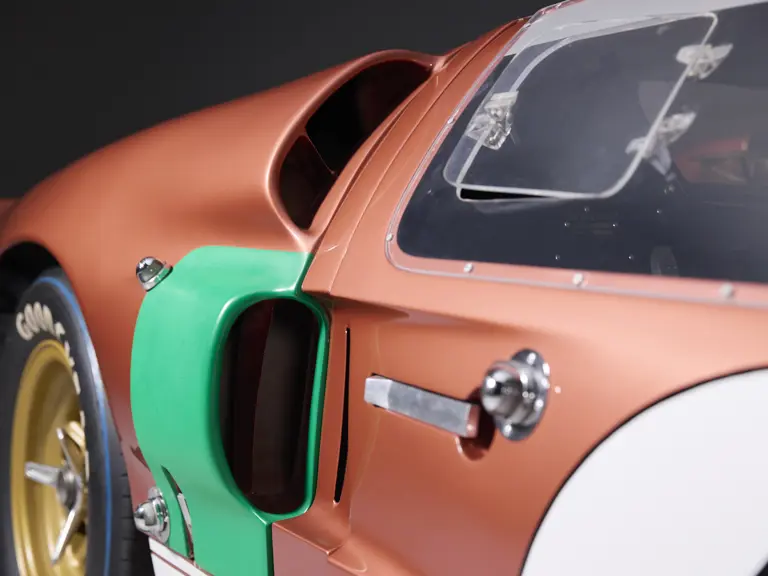
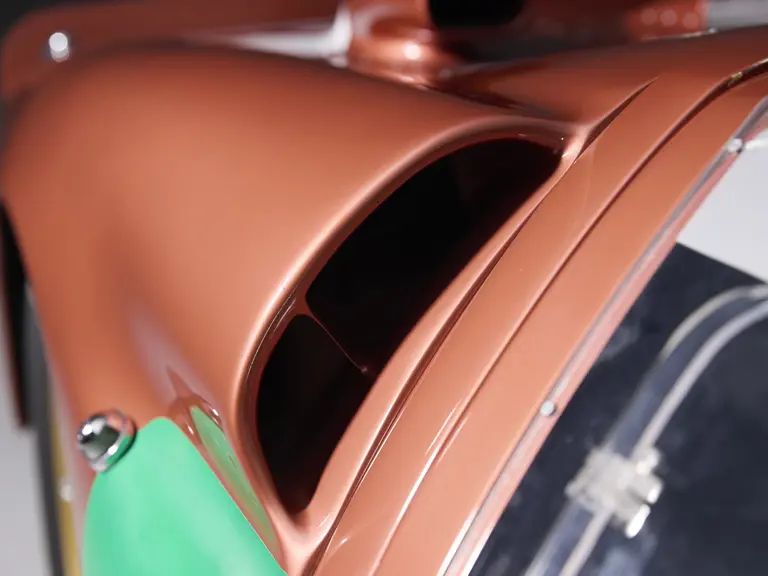
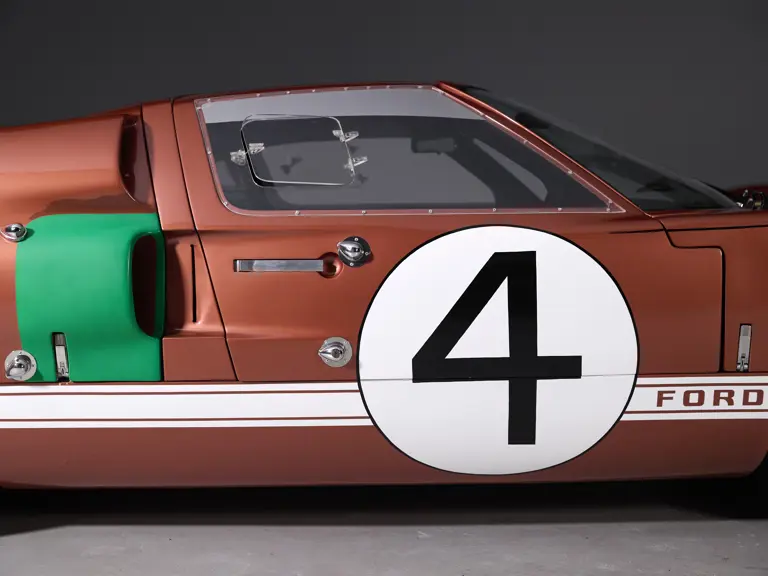
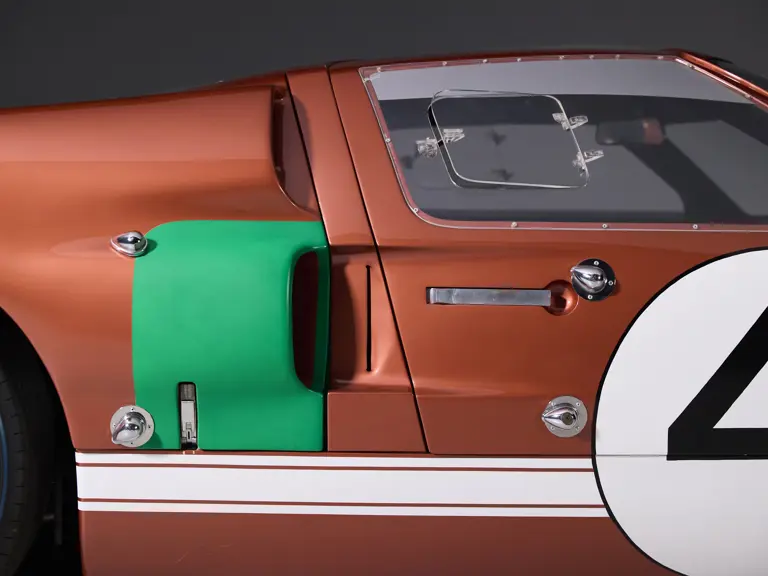
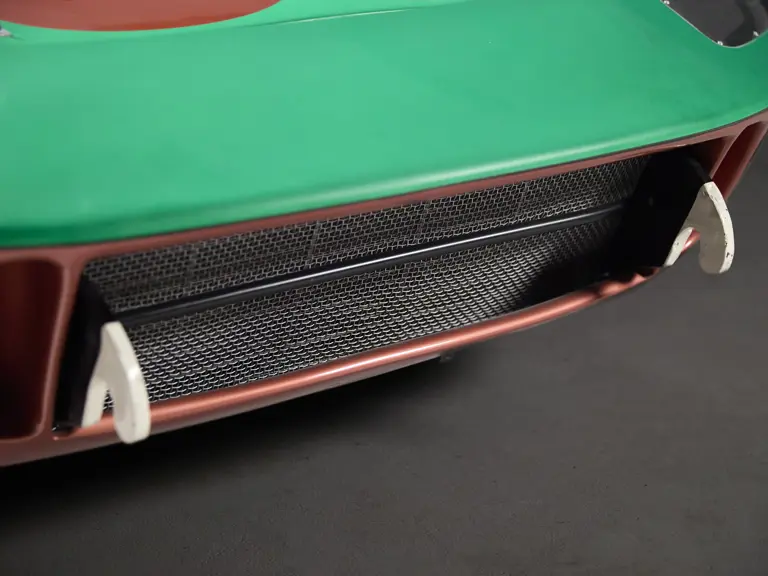

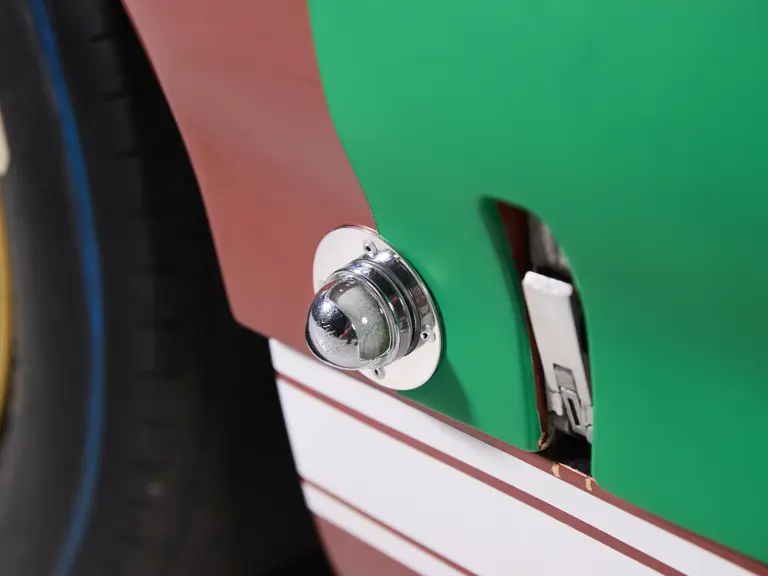
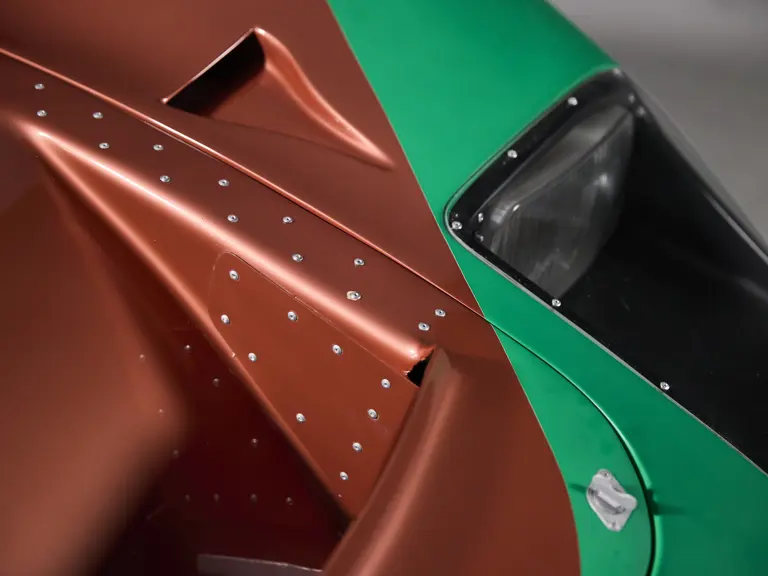

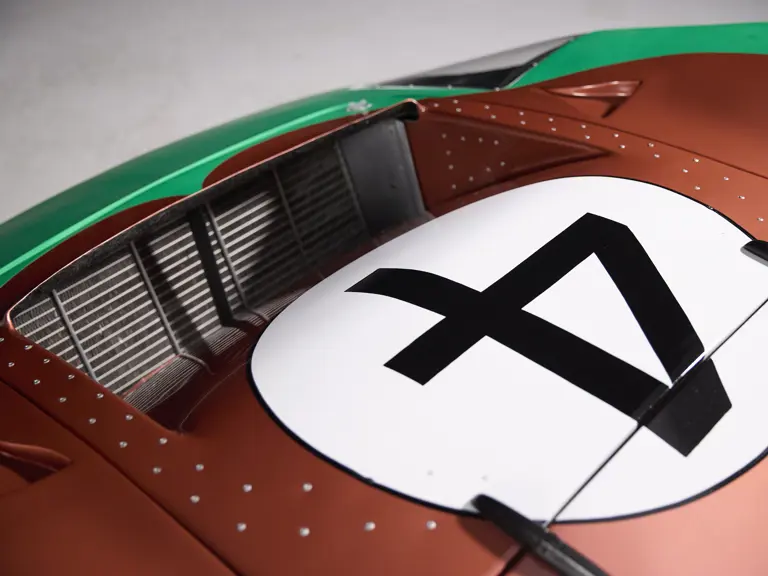
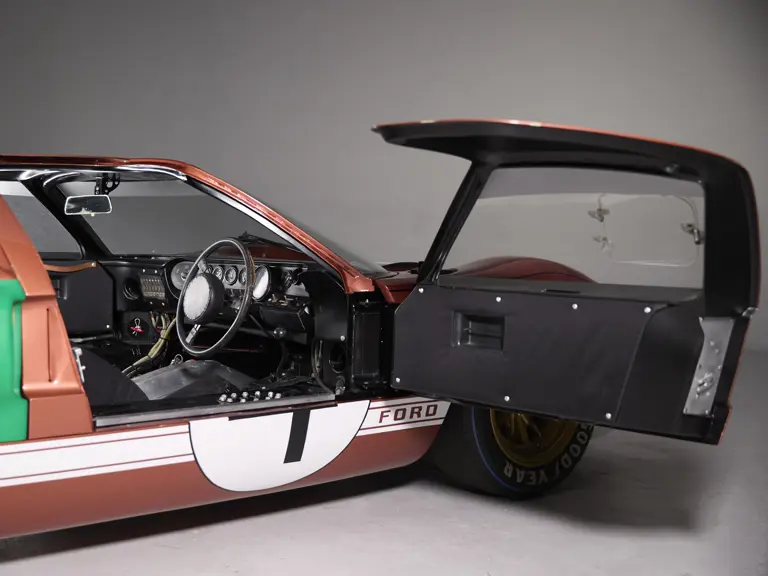

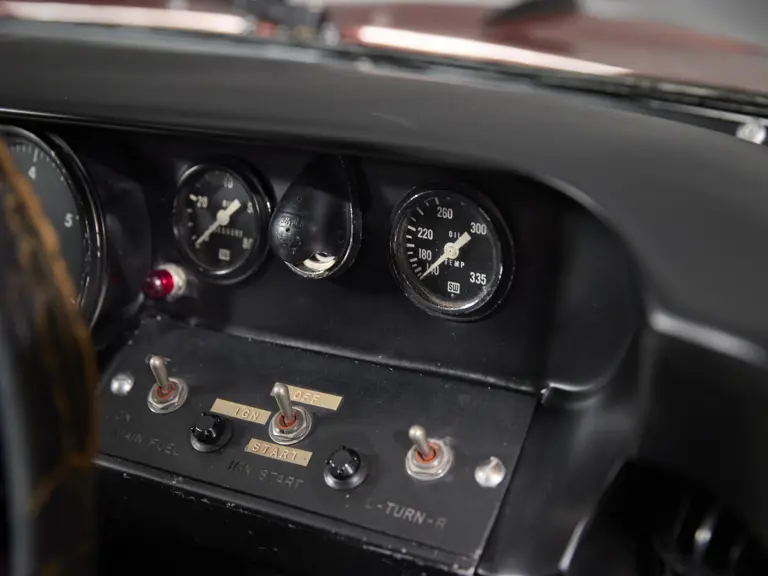
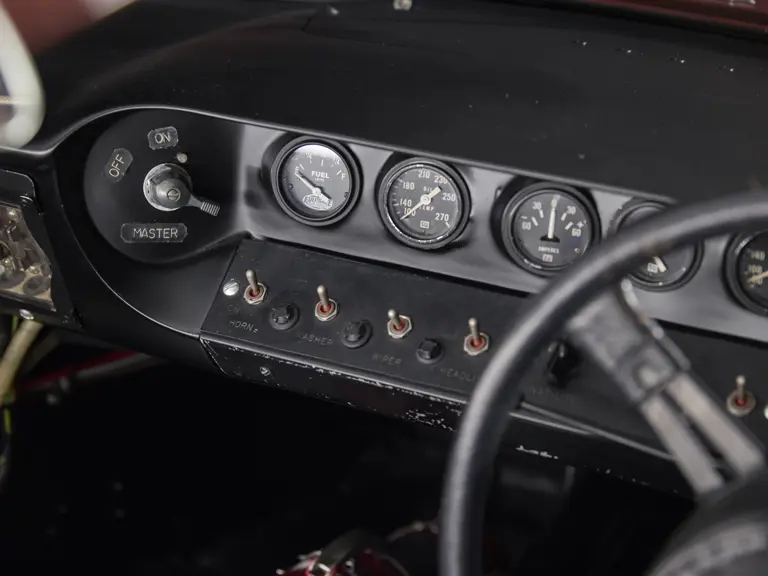
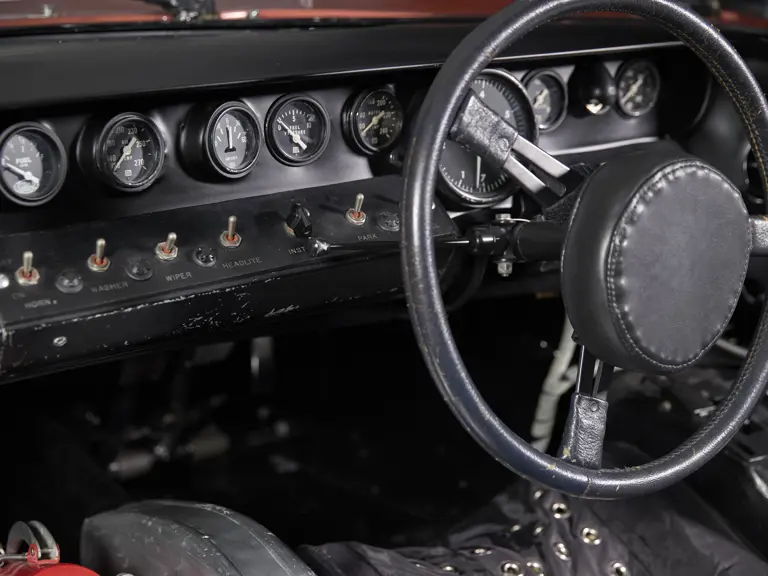
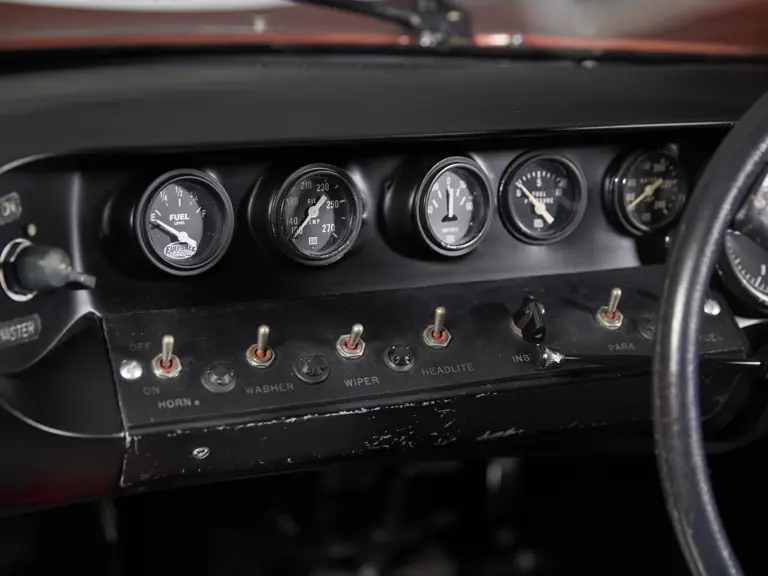
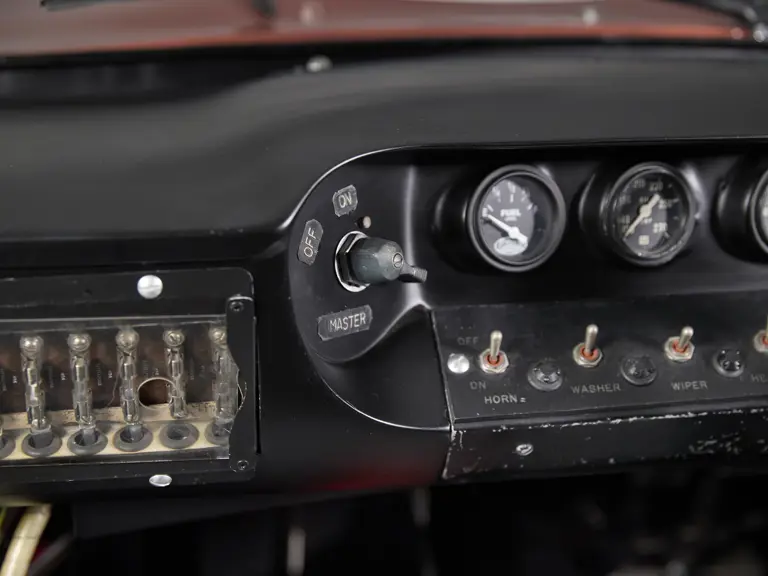
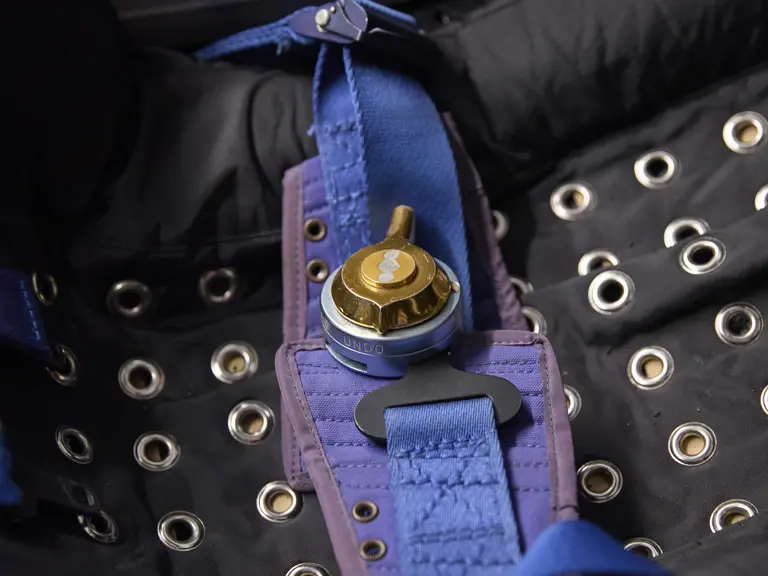
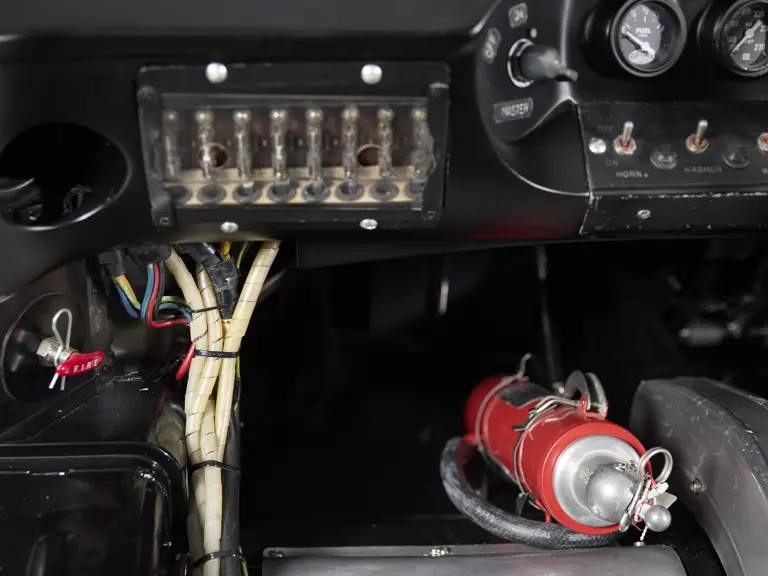
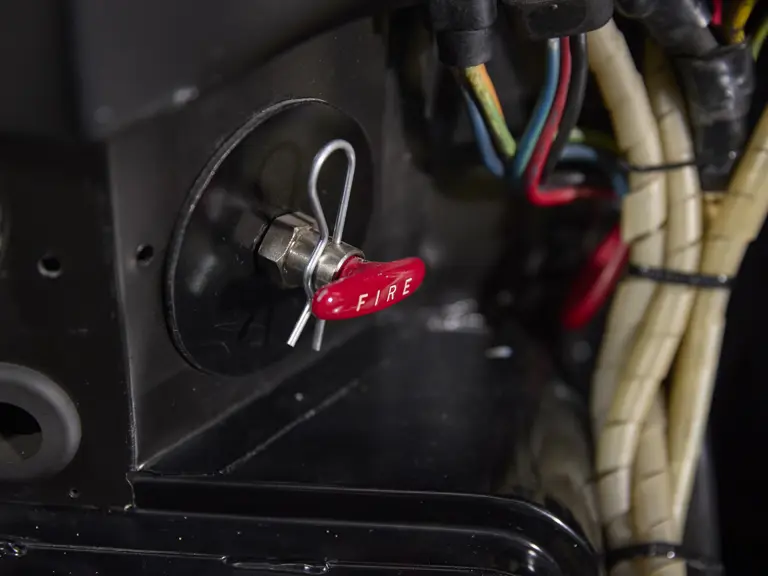
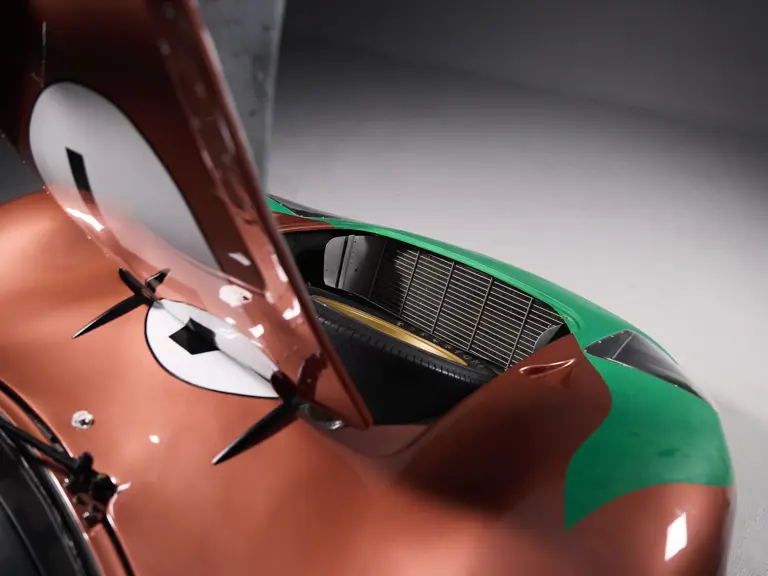
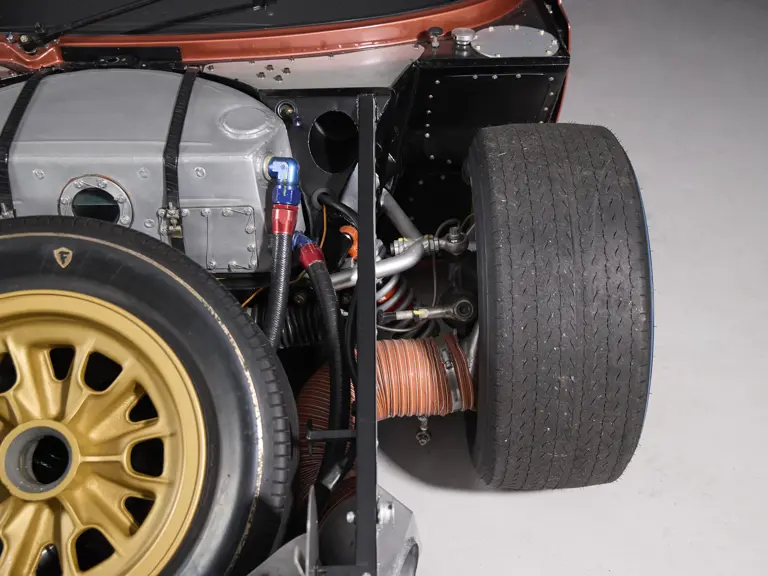

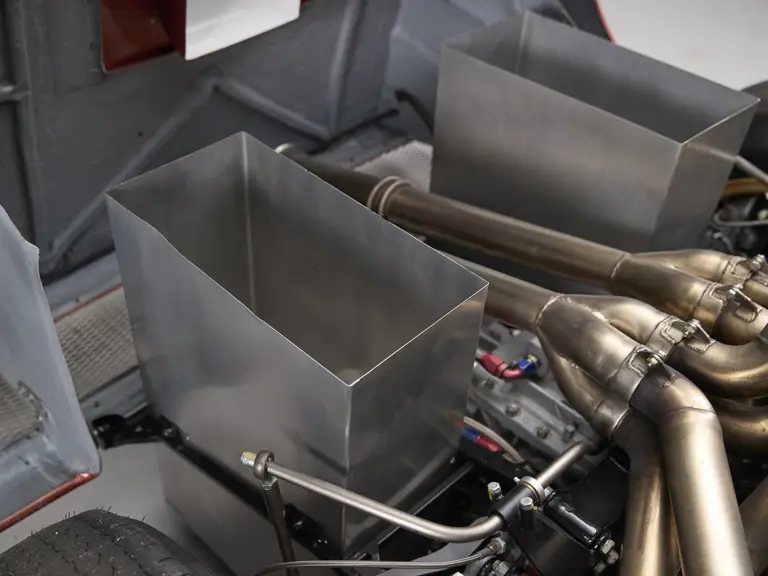

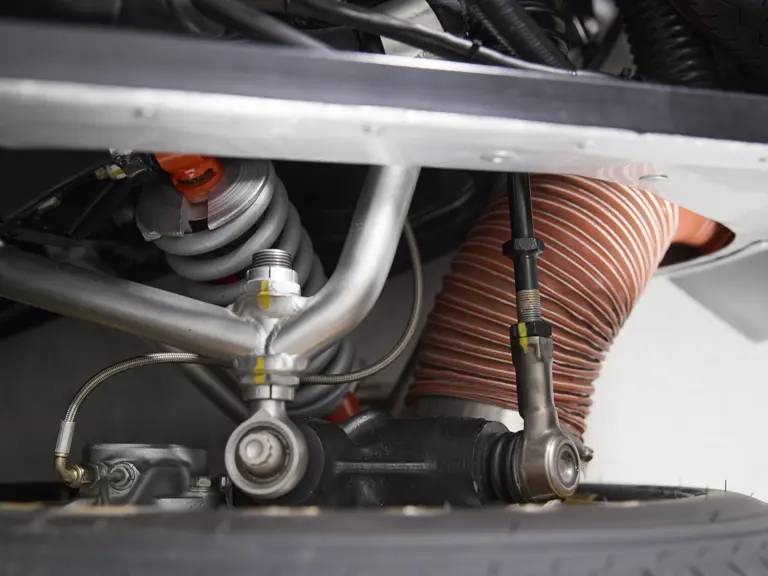
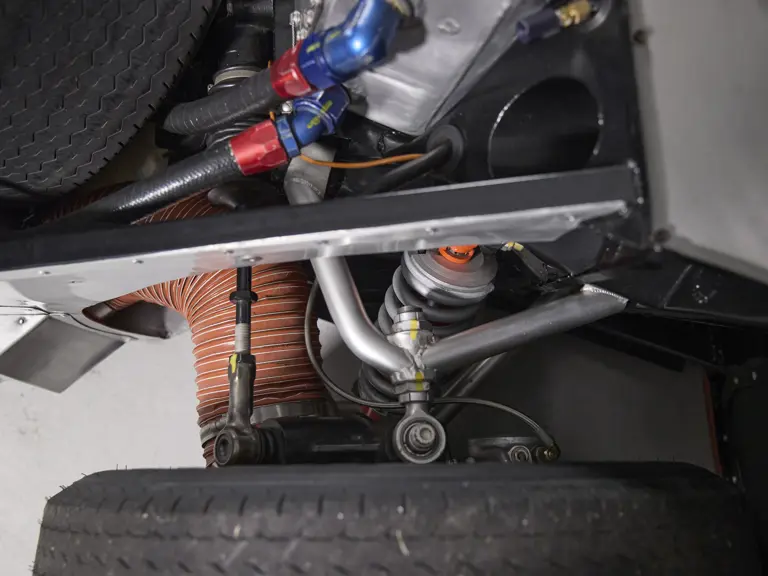


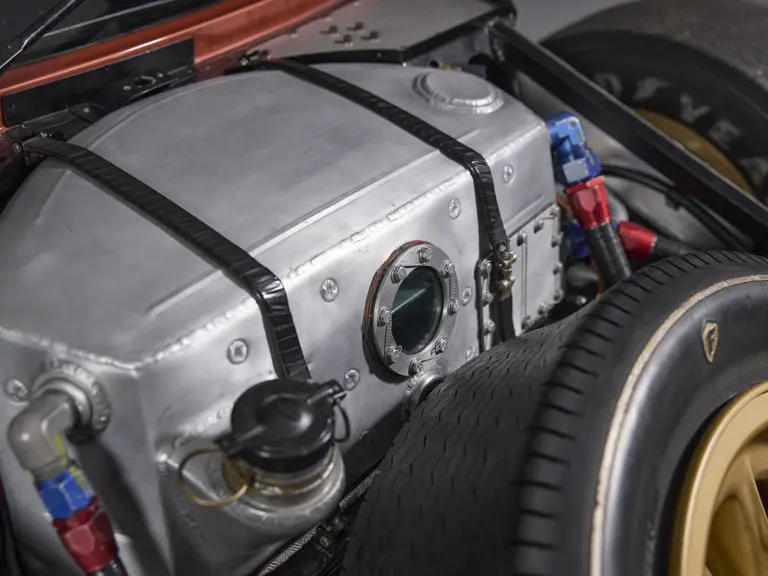

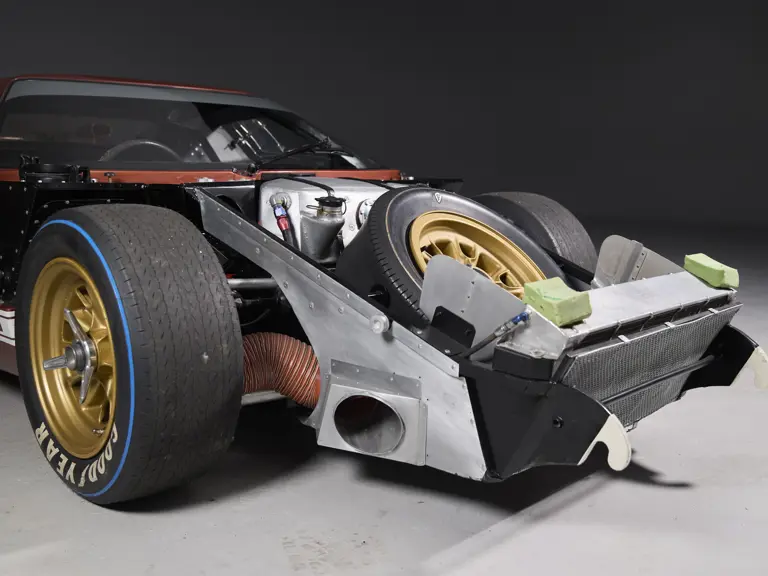


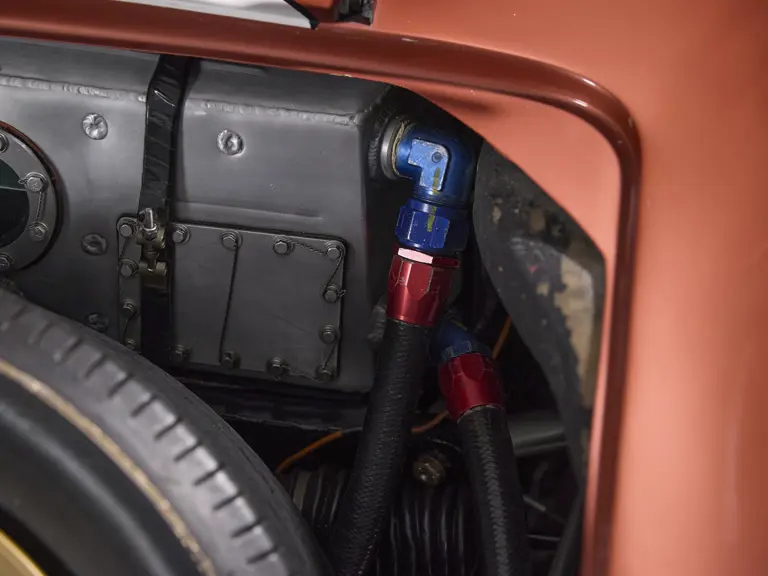

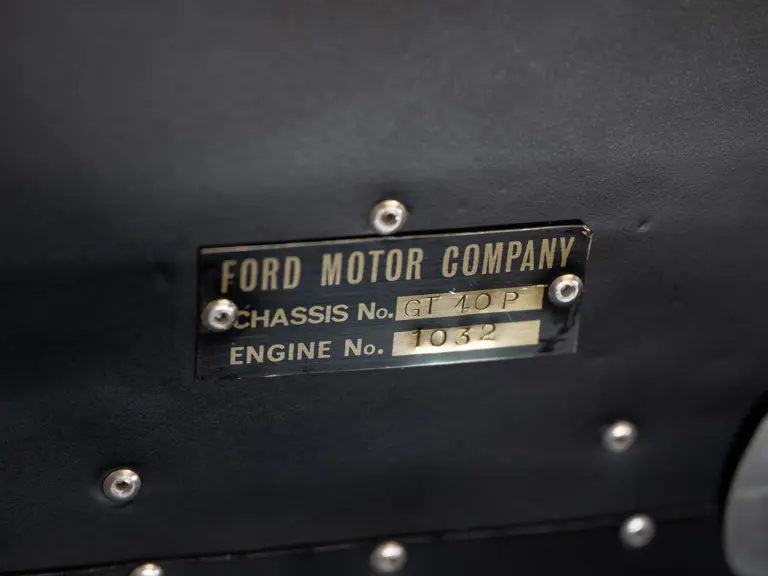
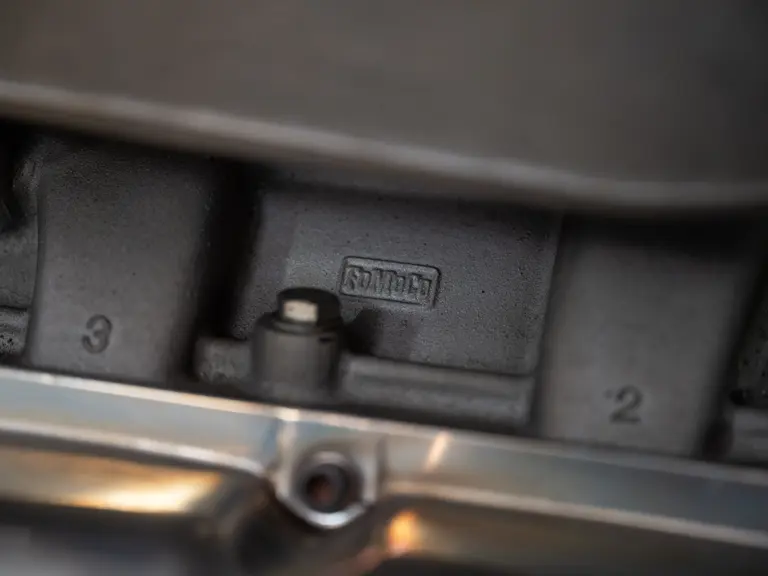

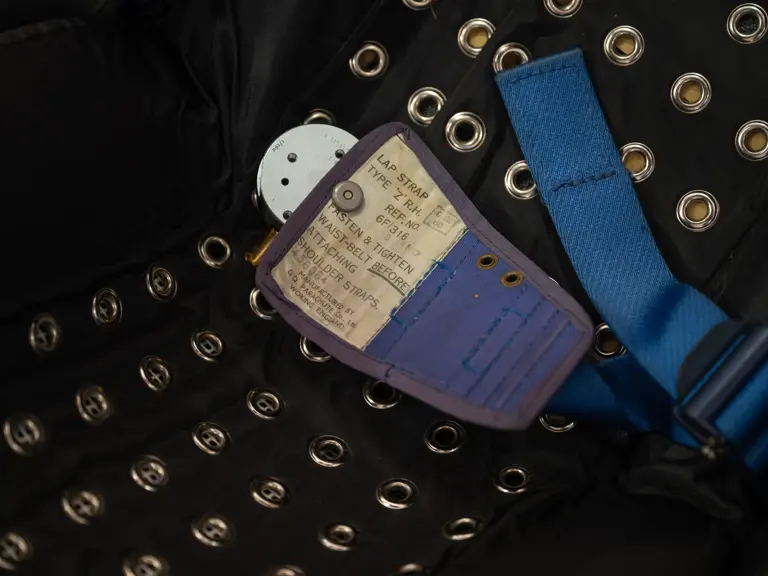


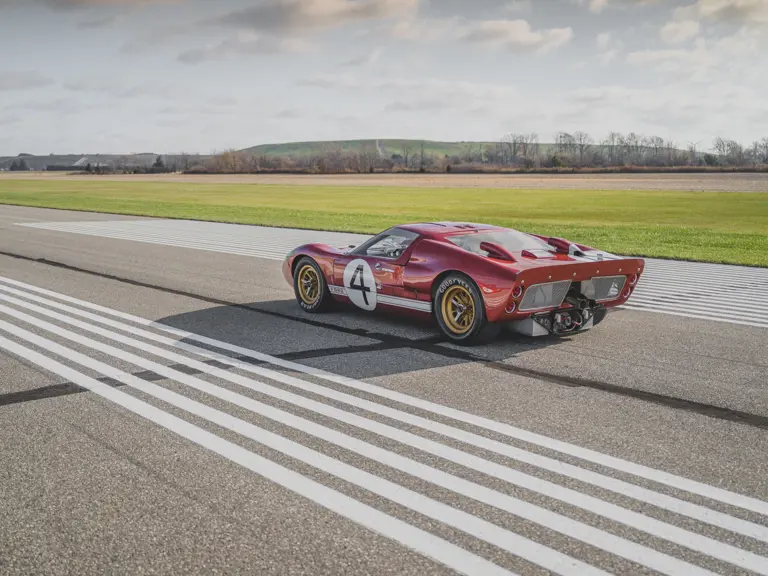

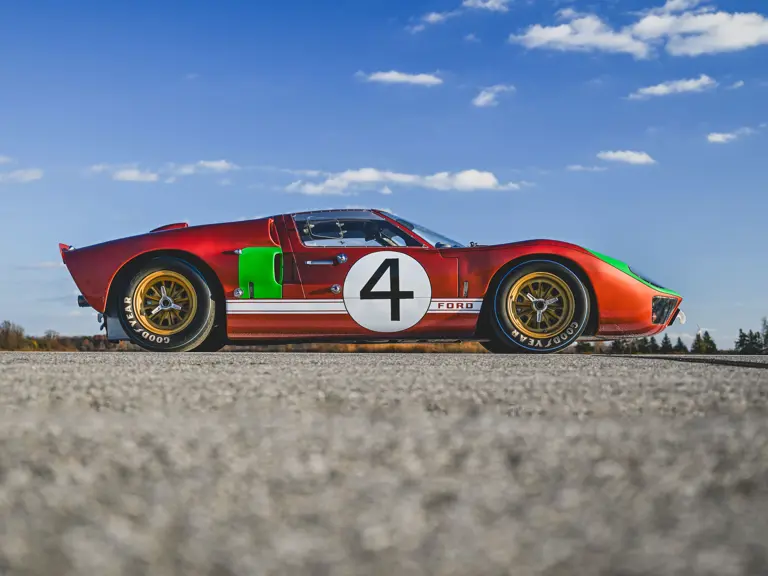
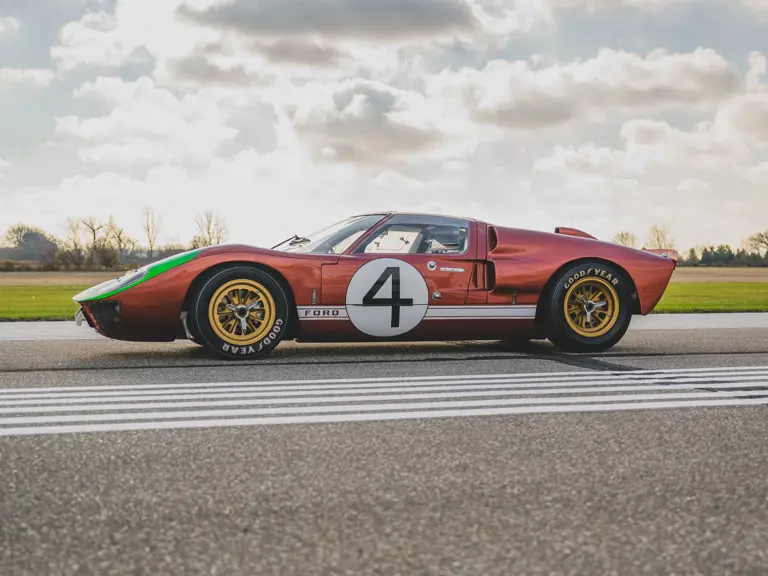



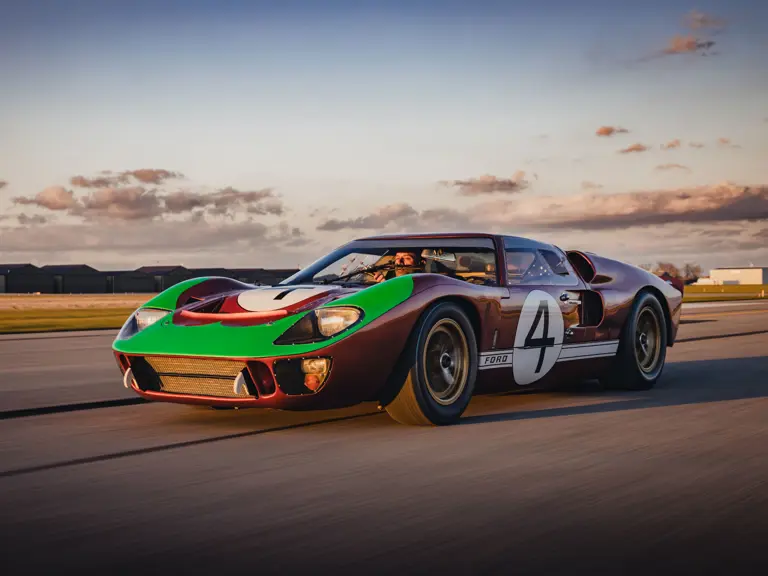

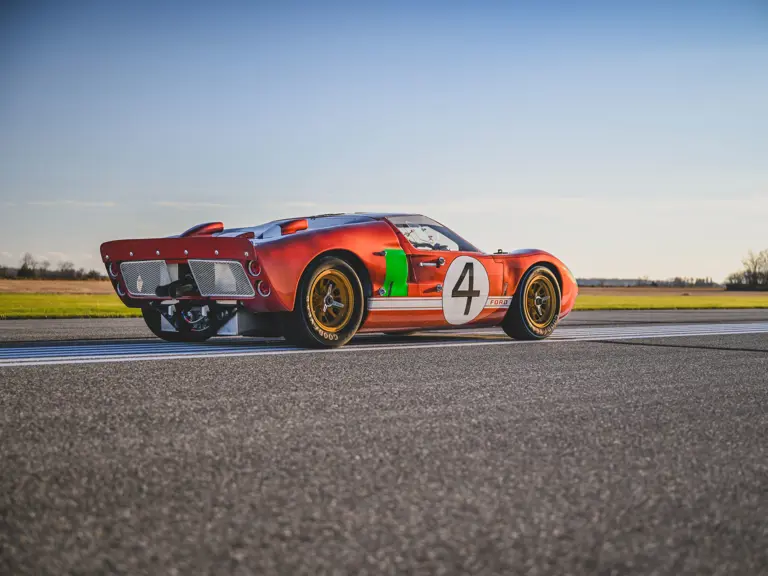
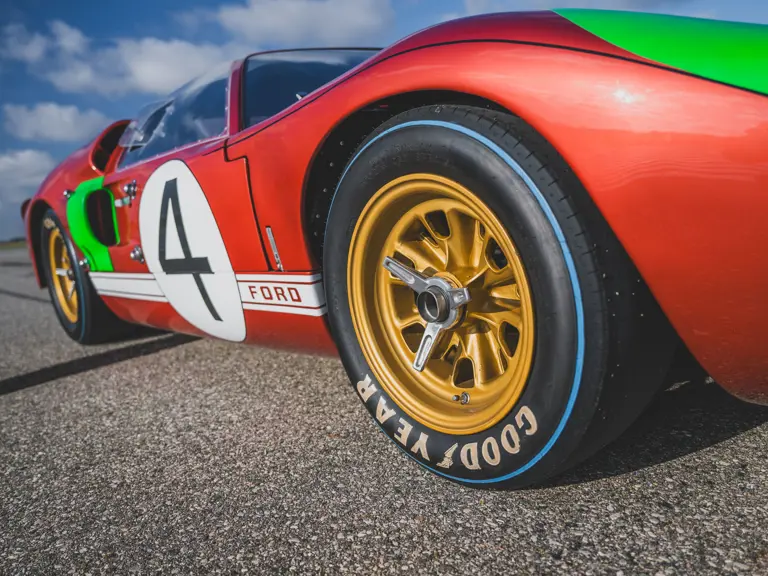
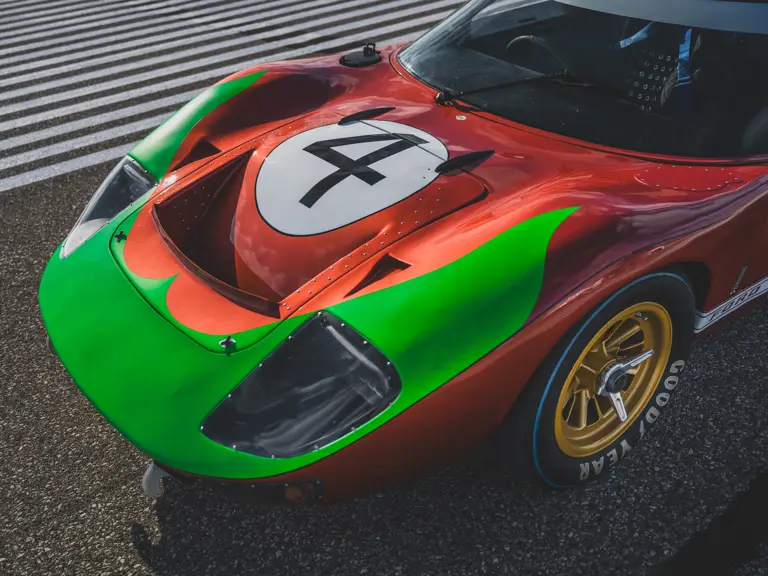

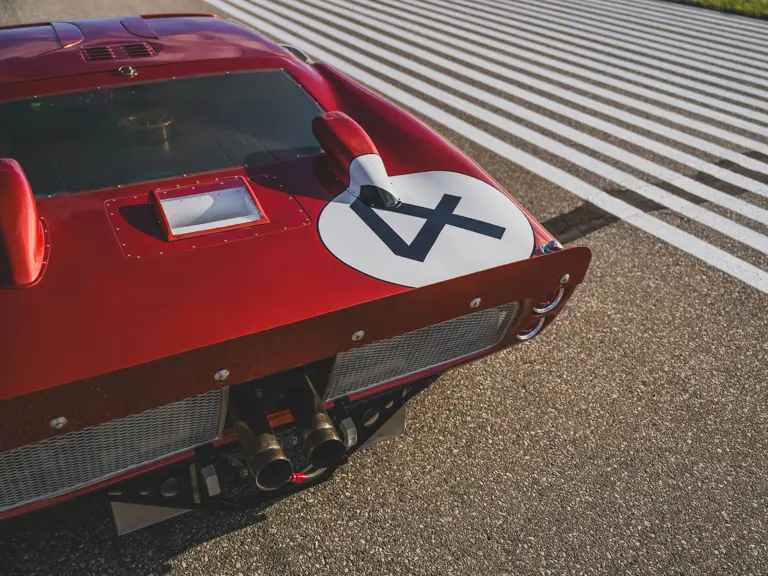
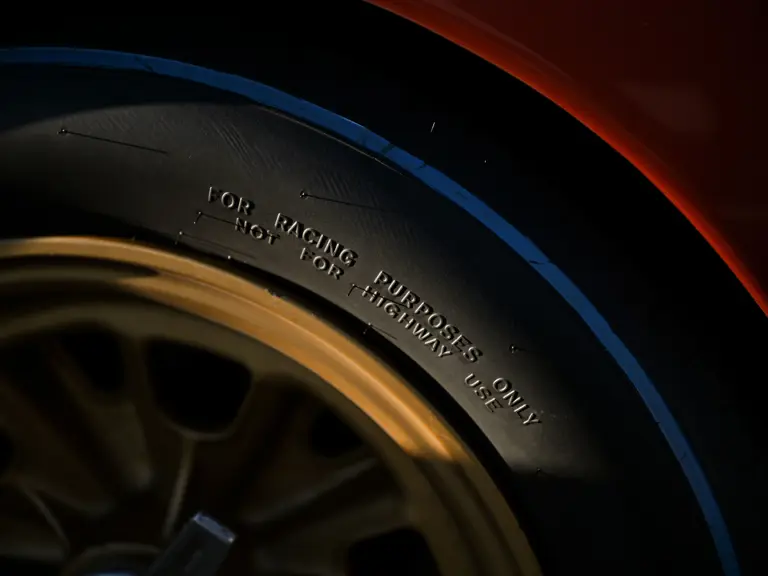
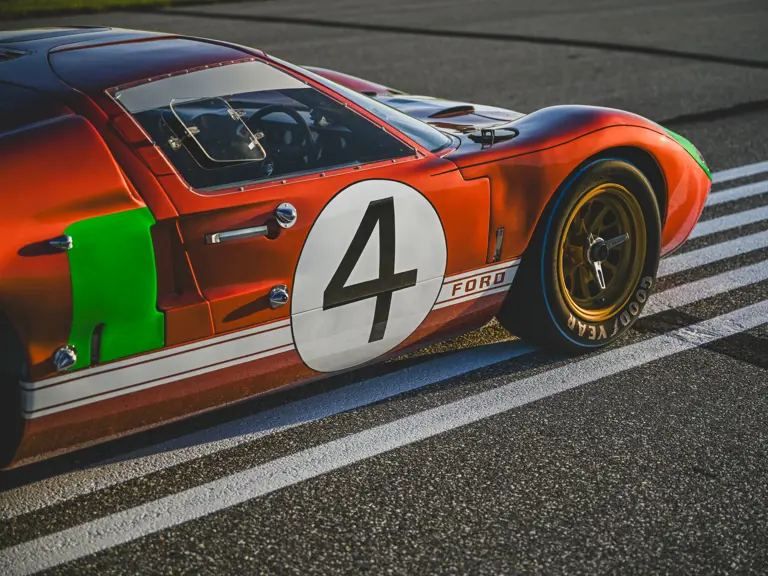
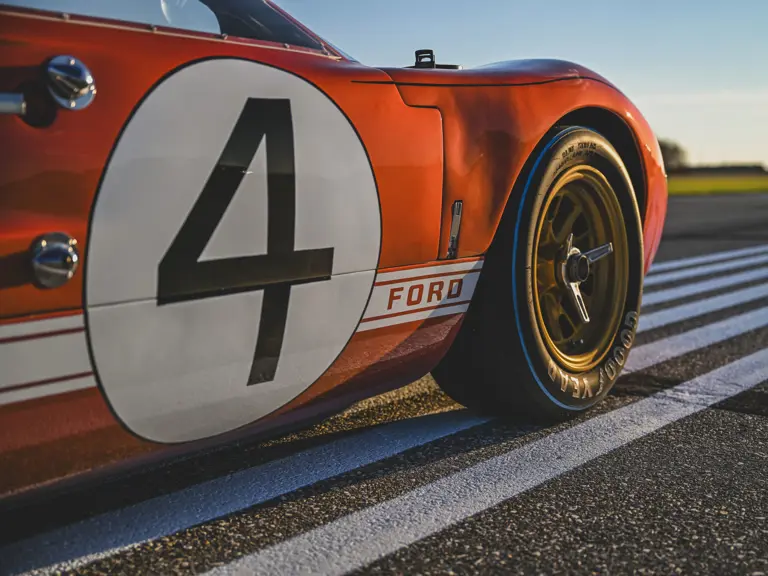
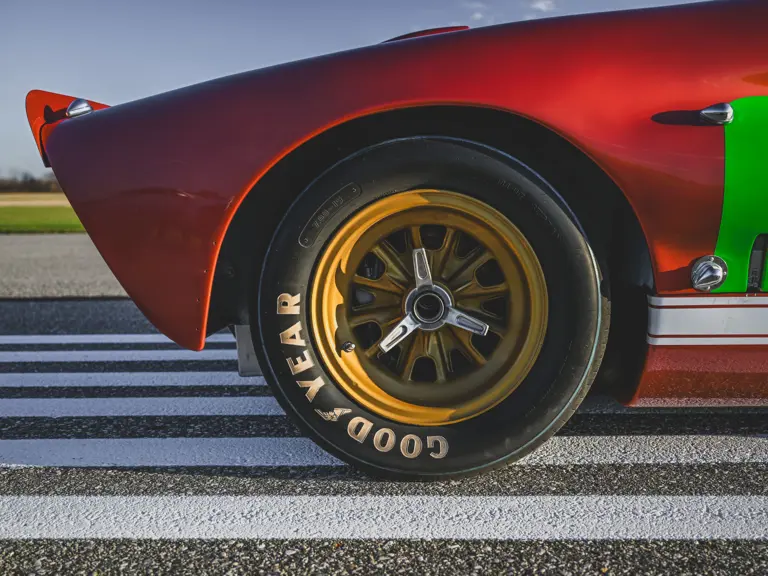
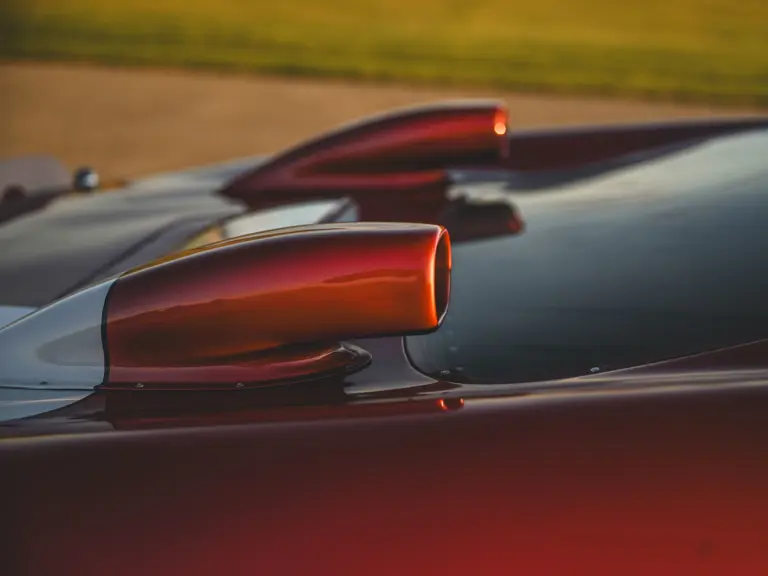

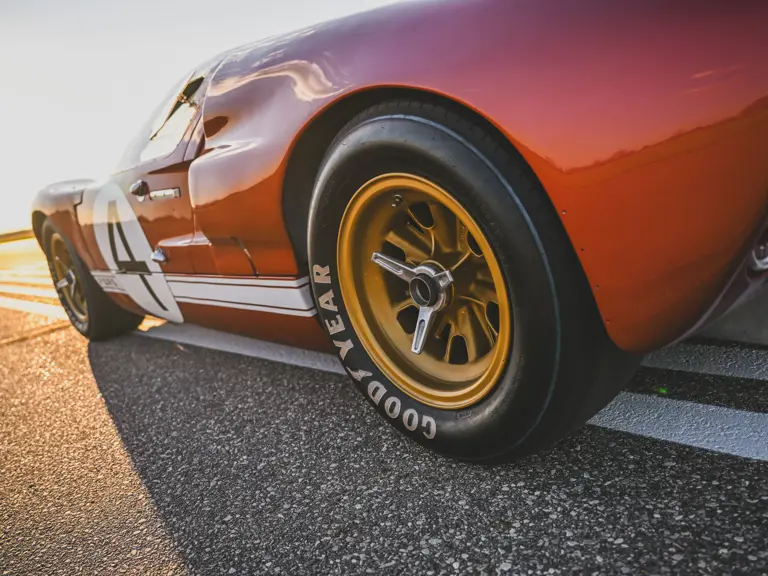
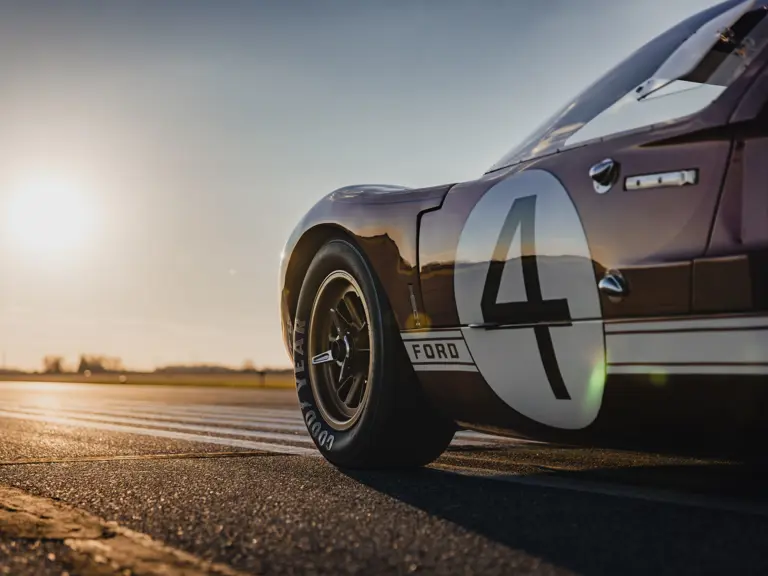

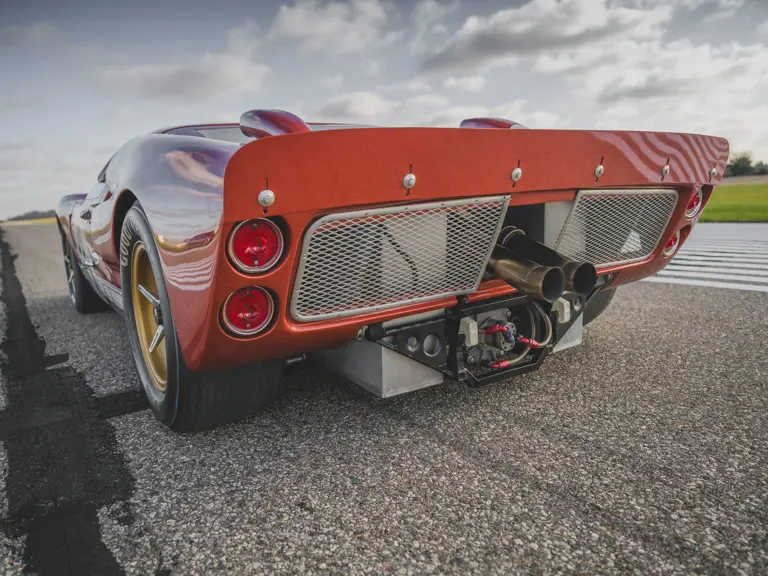

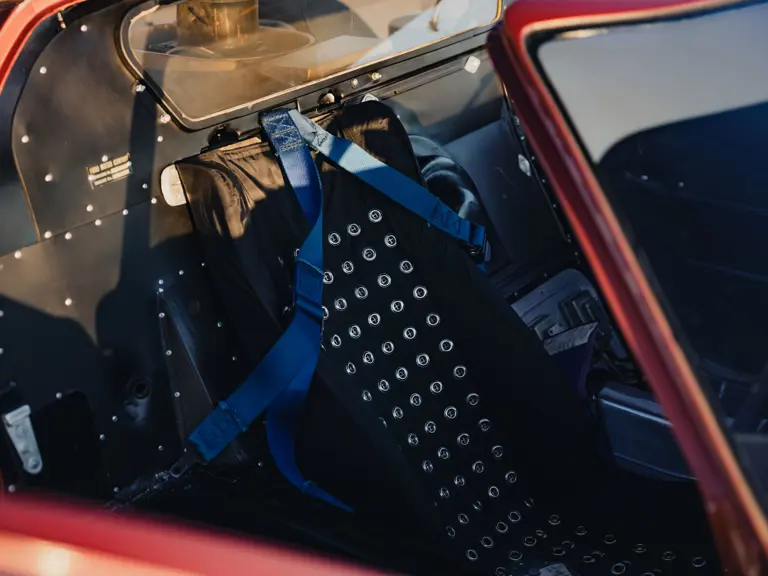
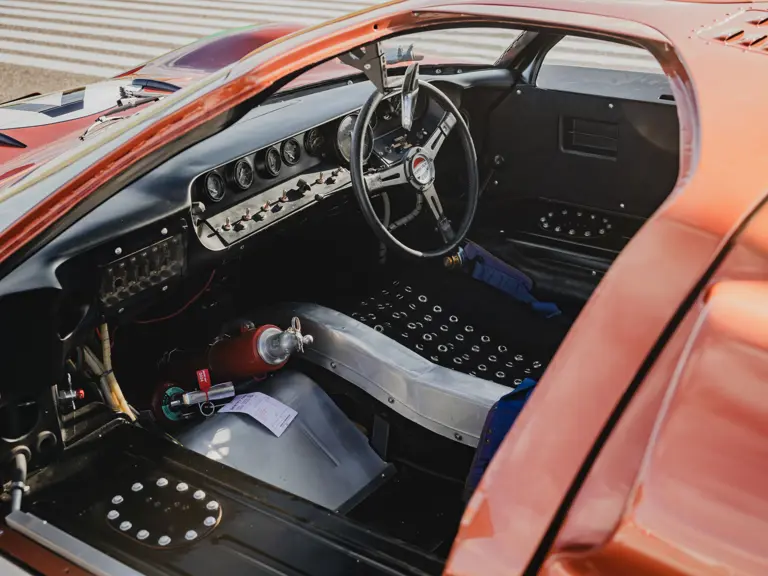
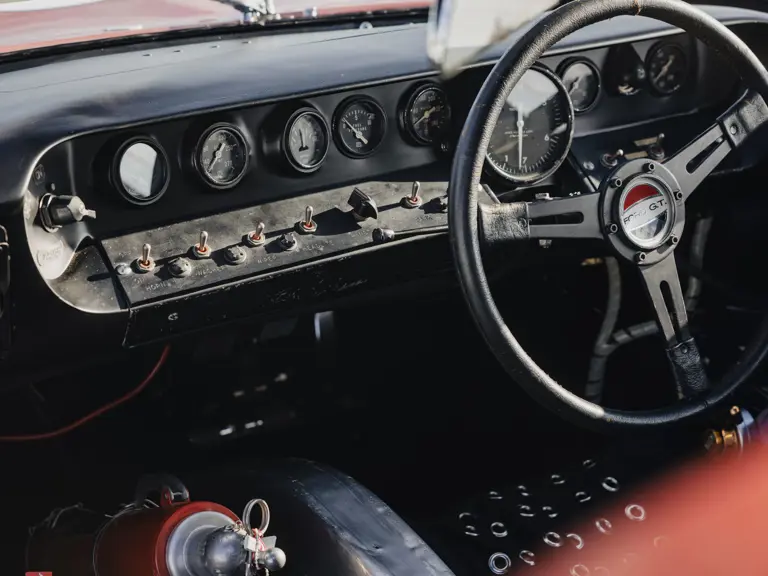
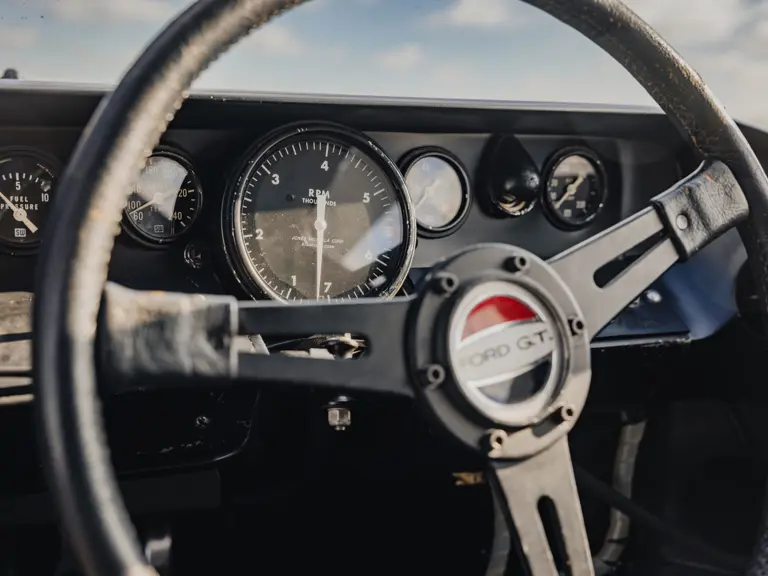
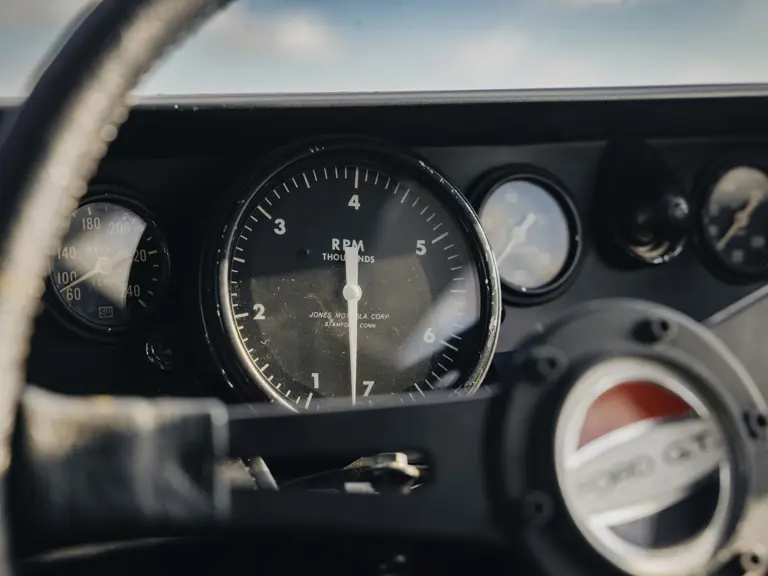


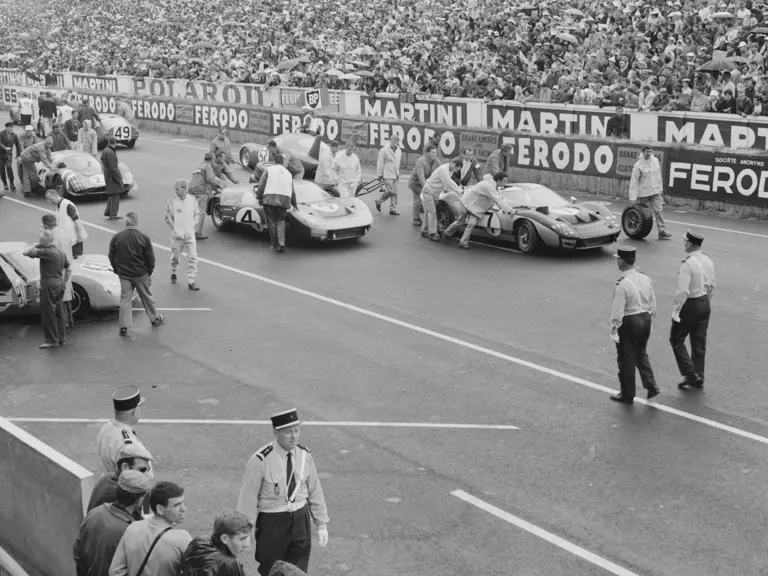
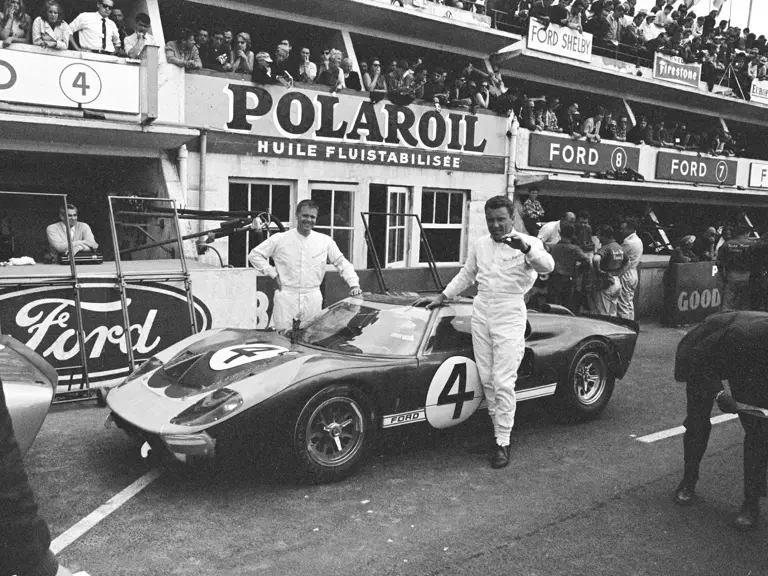
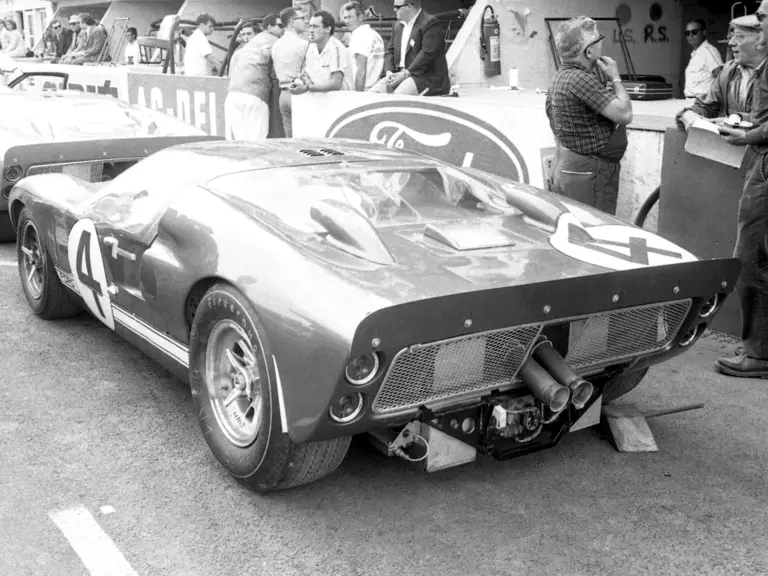
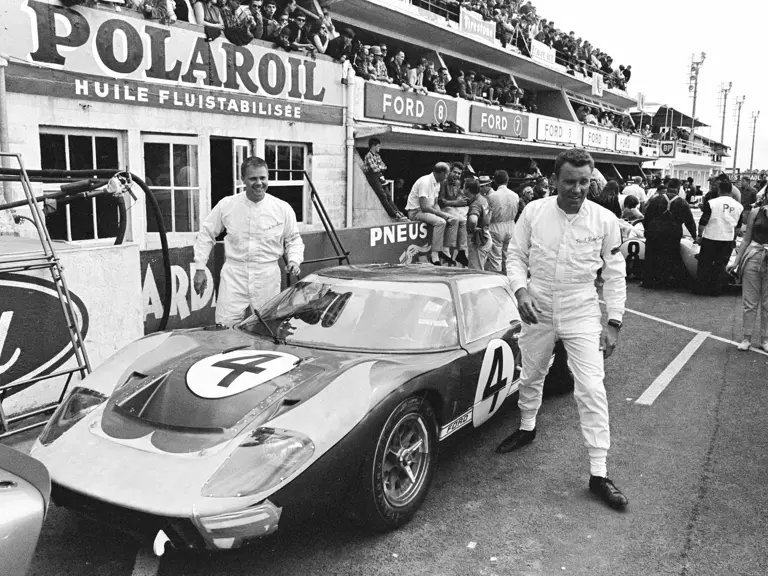
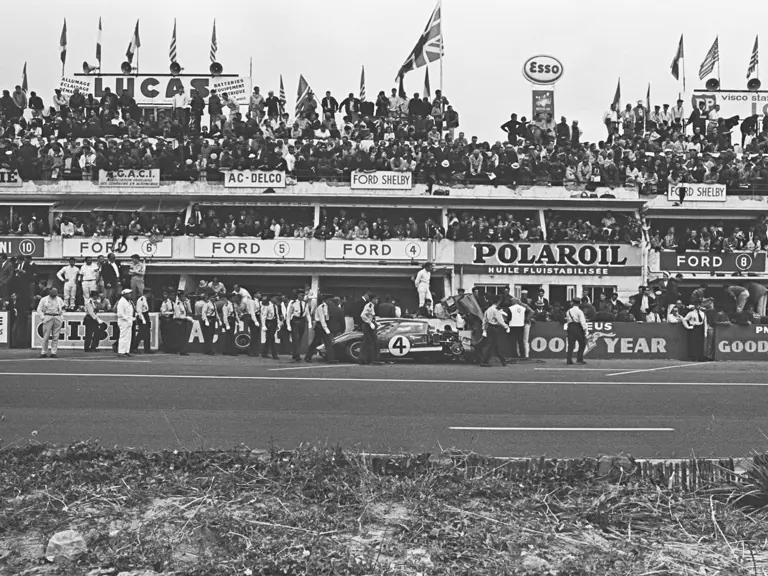
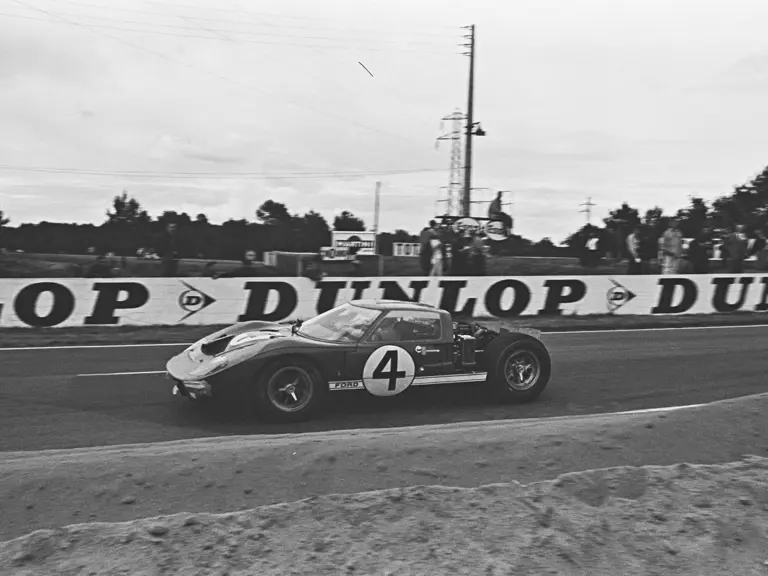
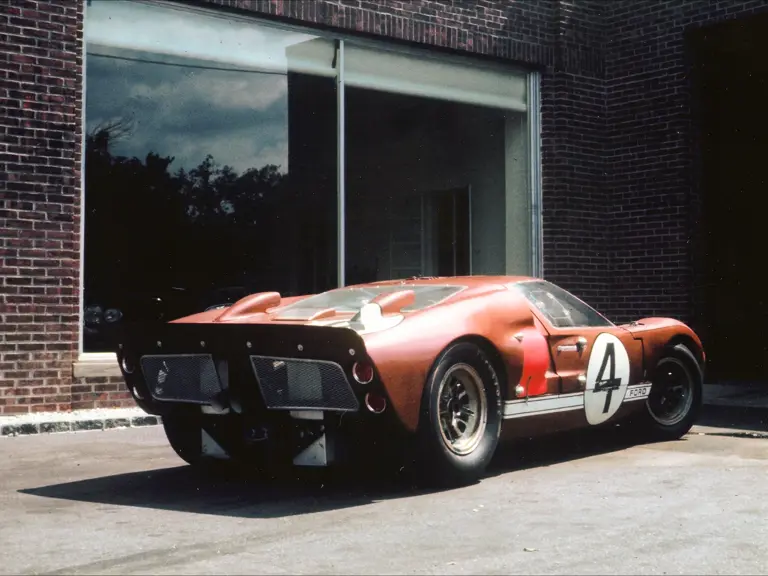

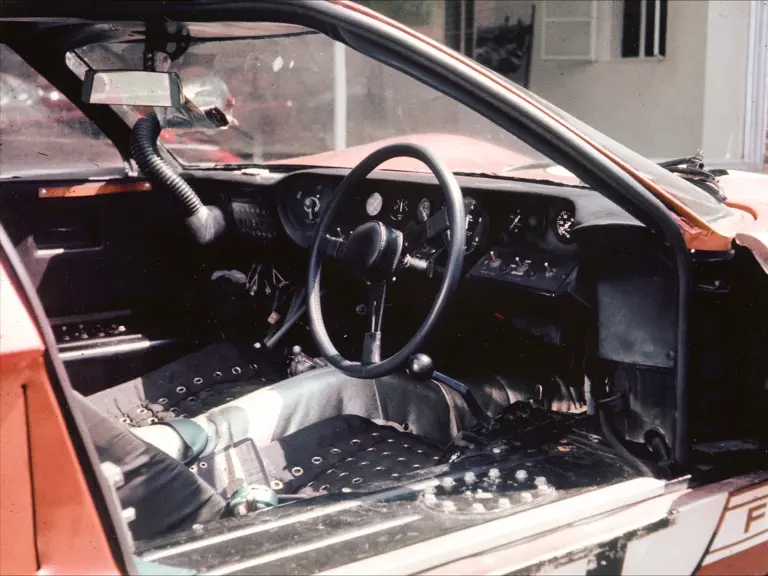
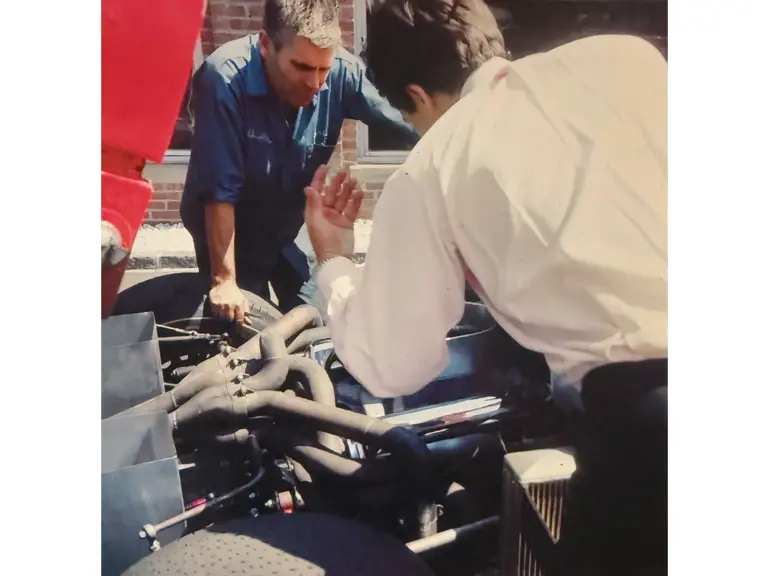
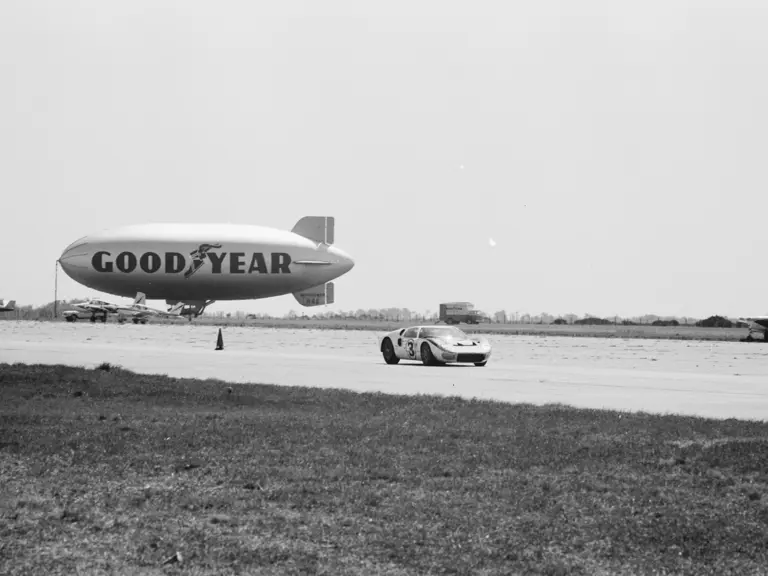

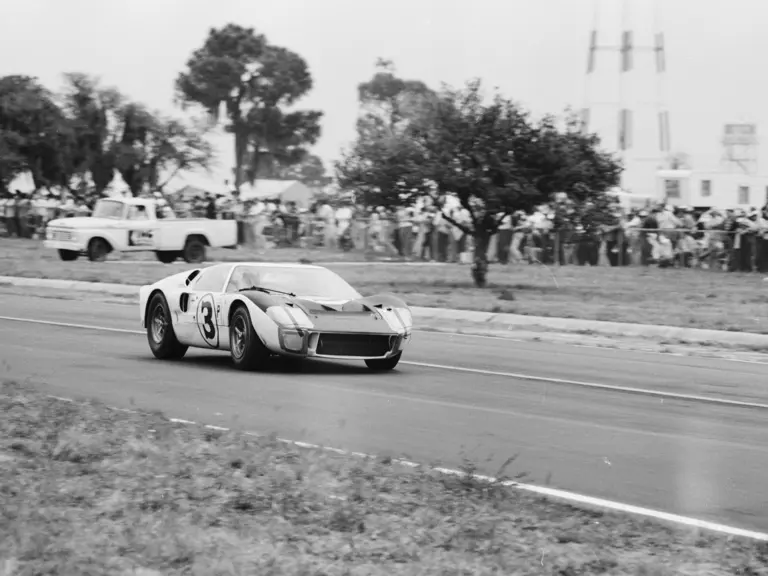
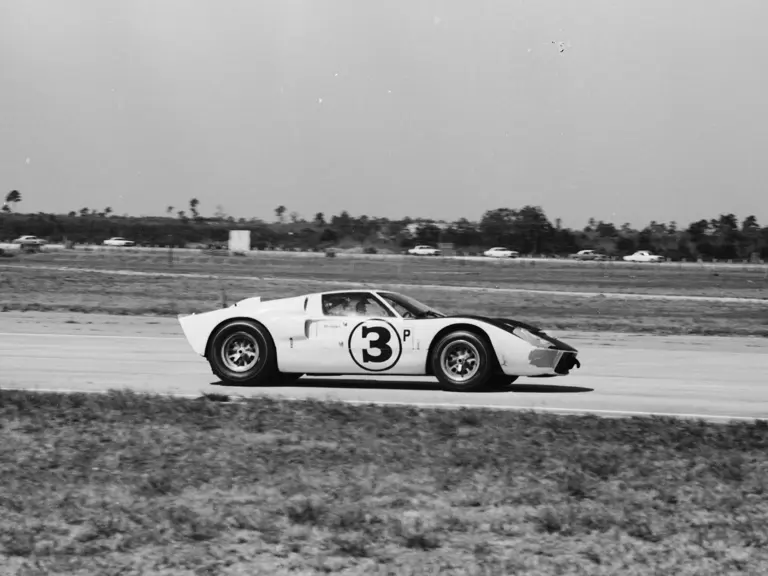
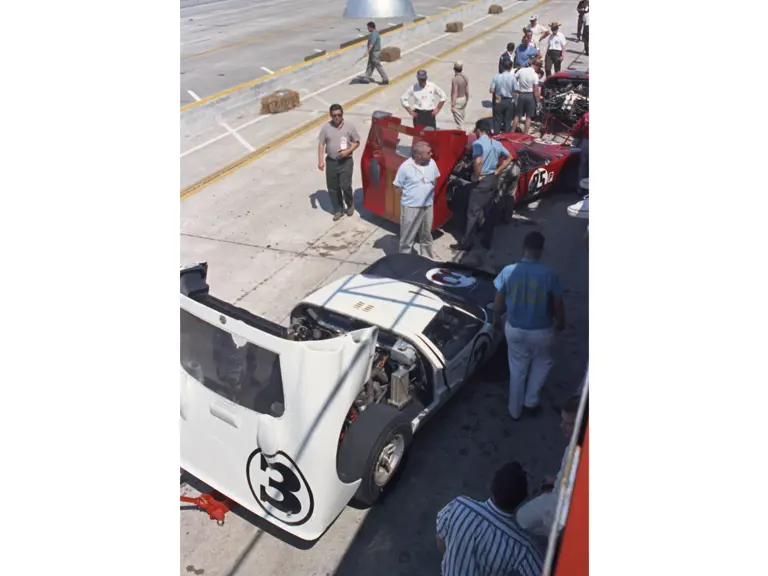
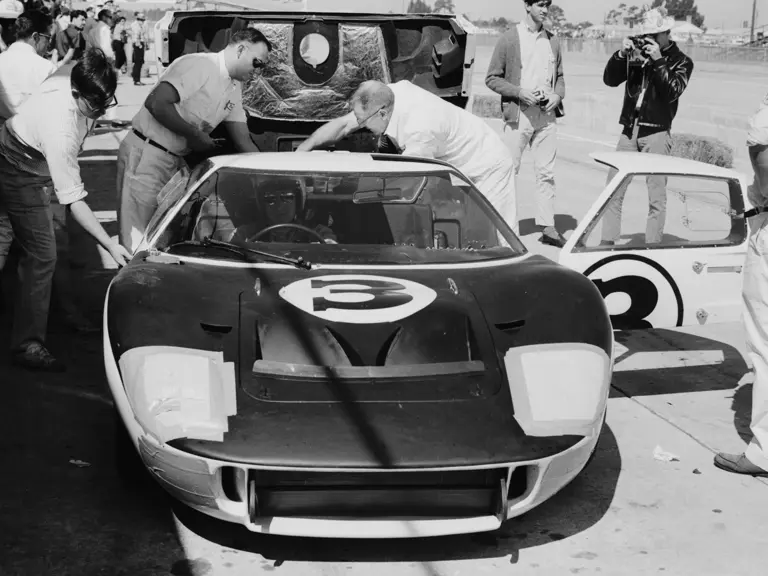
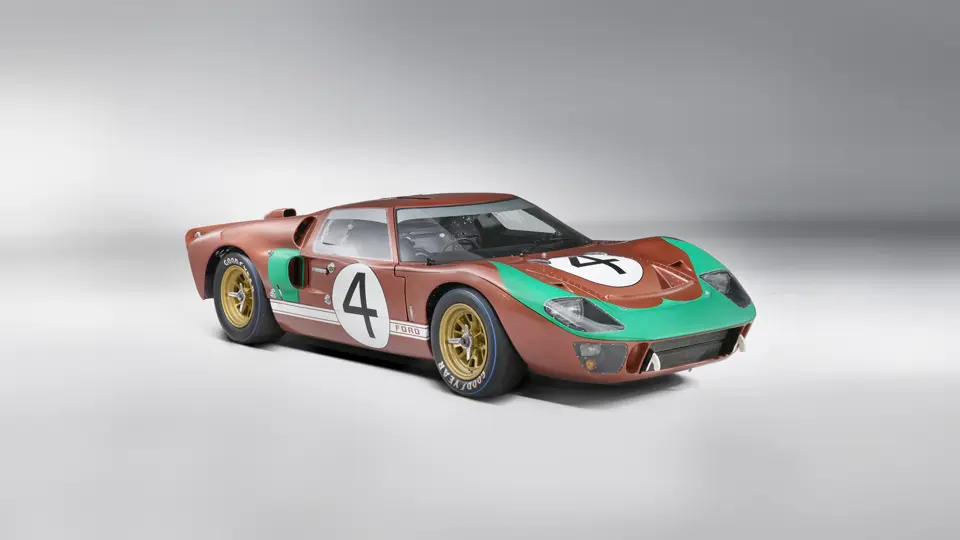
 | Coral Gables, Florida
| Coral Gables, Florida




